Serene, balanced landscapes can transform even the smallest patch of earth into a place of calm reflection. Zen gardens — rooted in Japanese tradition — use rocks, raked gravel, and mindful planting to evoke mountains, rivers, and harmony in miniature. Whether you own a sprawling yard or a slim balcony, the following 25 Zen garden ideas reveal complete, theme-based blueprints that blend form, texture, and symbolism. Each design synchronizes hardscape, plant palette, and sensory elements so you can visualize and recreate an authentic sanctuary at home.

1. Minimalist Raked Gravel Zen Garden
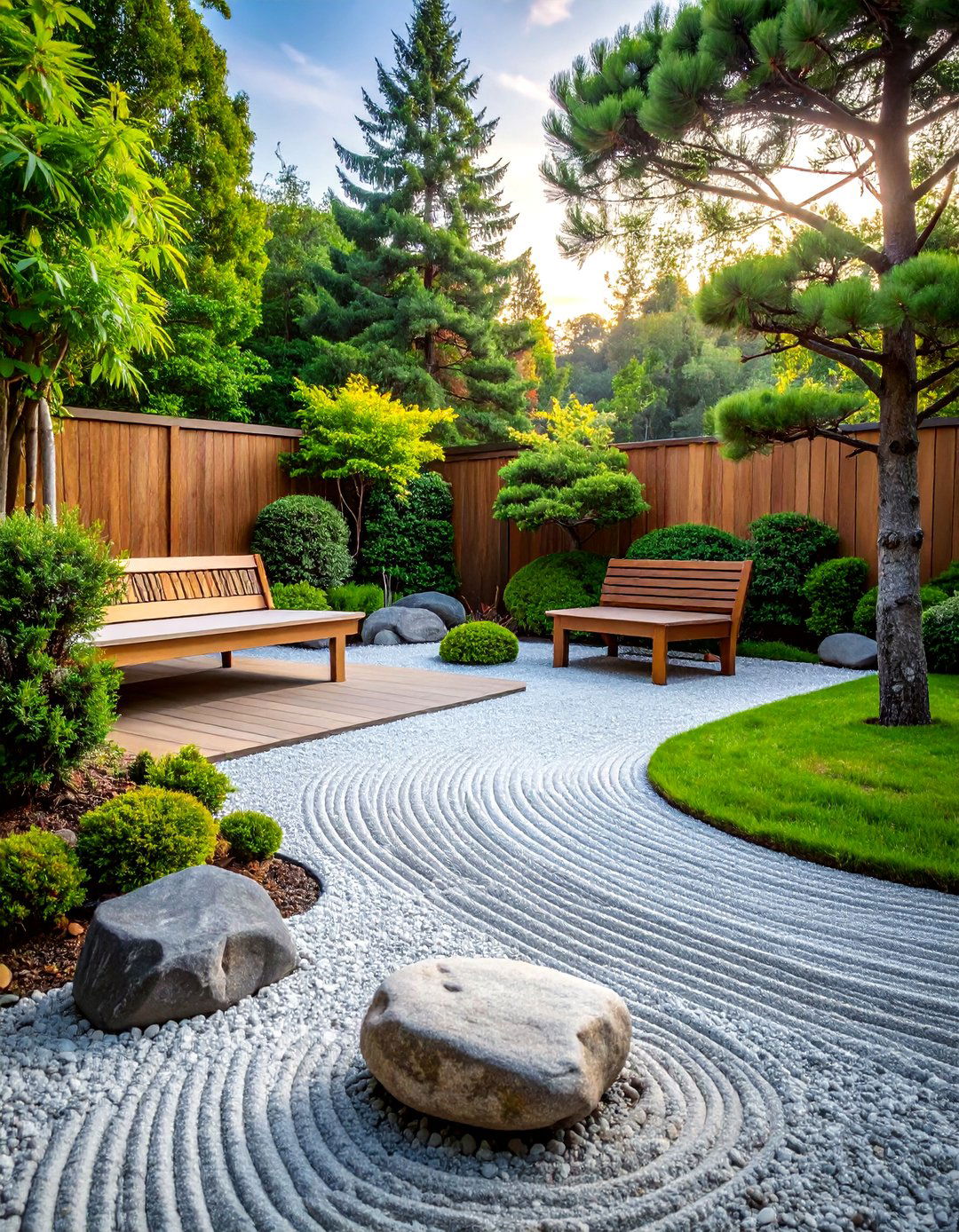
A pared-down composition of perfectly leveled sandy gravel, three asymmetrically placed granite boulders, and one dwarf black pine captures the essence of nothingness. Concentric rakes radiate from each stone, suggesting ripples on still water and reinforcing meditative rhythm. Low, weathered cedar borders keep granules contained while disappearing visually into the pale substrate. Sparse green moss tucked at rock bases softens edges without cluttering the vista. A single teak bench, set just outside the gravel rectangle, invites silent observation rather than participation. Solar spotlights angled from the ground cast gentle evening shadows, allowing textures to emerge after dusk and extending contemplative hours.
2. Courtyard Pocket Zen Garden
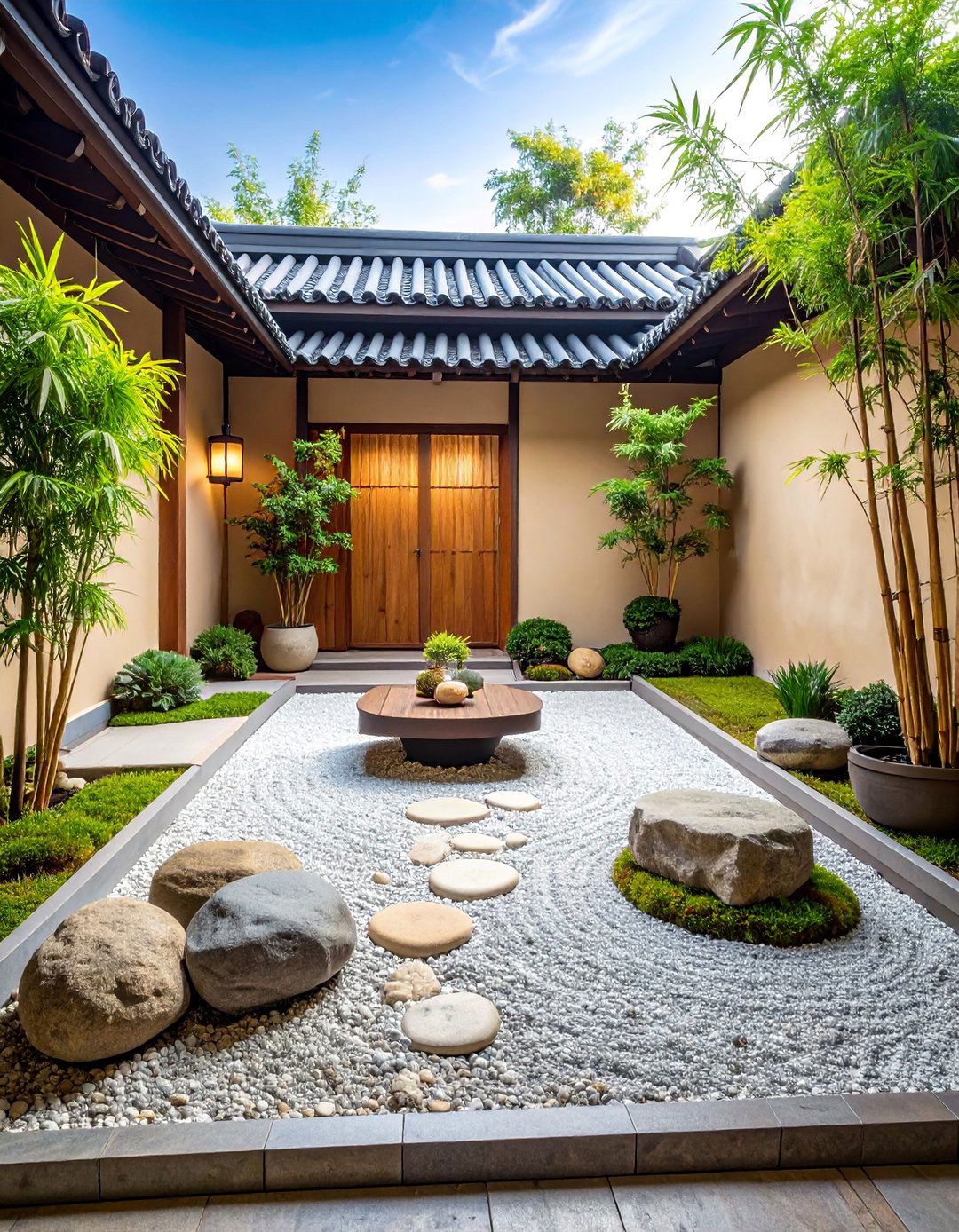
In an urban courtyard, compressed space becomes an asset through vertical layering and repetition. Textured stucco walls painted warm taupe frame fine crushed granite spread across the floor plane. Tall slender bamboo in narrow planters screen neighboring windows and rustle quietly in the breeze. A trio of smooth river stones, arranged in a subtle triangle, provides sculptural focus while leaving uncluttered walking areas. Sleek corten-steel edging retains gravel and echoes the earthy wall tones. Inset path lights subtly illuminate the bamboo culms at night, highlighting crisp shadows. Seating comes from a backless stone slab that blends seamlessly with the ground material, encouraging momentary pauses.
3. Moss Carpet Zen Garden
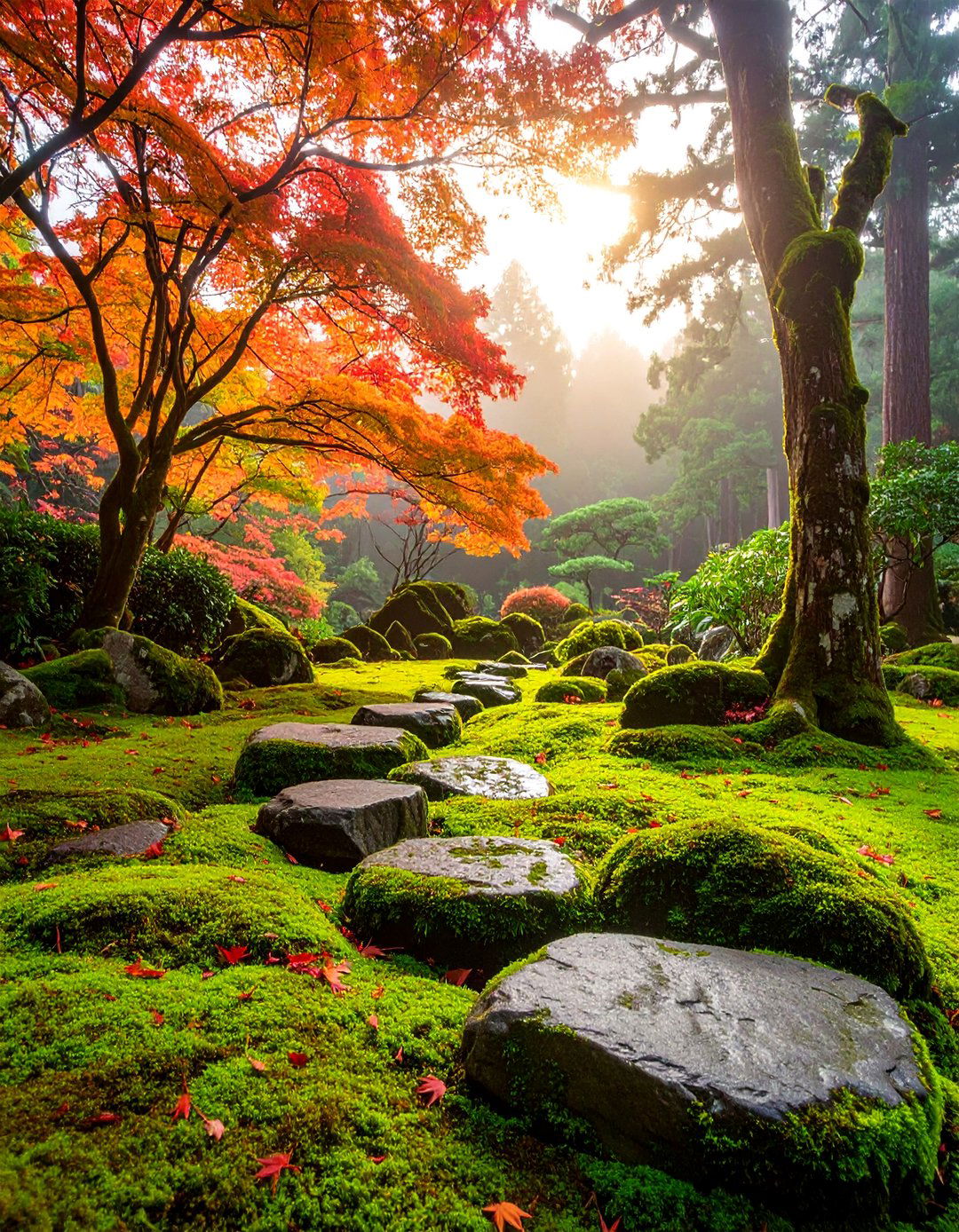
Softly padded swathes of emerald moss replace gravel to deliver a plush, living tapestry beneath towering maple branches. Discreet stepping-stone islands — cut from irregular slate — float atop the velvety surface, guiding barefoot meditation with minimal disturbance. Scattered river pebbles or “islands” break the green monotony and emulate distant hills. Moisture-retaining, curved stone borders hold soil while blending into the scene. A hidden misting system releases gentle vapor at sunrise, maintaining humidity and lending an ethereal ambiance. Wooden meditation stools, fashioned from untreated cedar rounds, sink half an inch into the moss, grounding practitioners physically and symbolically in the garden’s quiet resilience.
4. Waterfall Rock Zen Garden
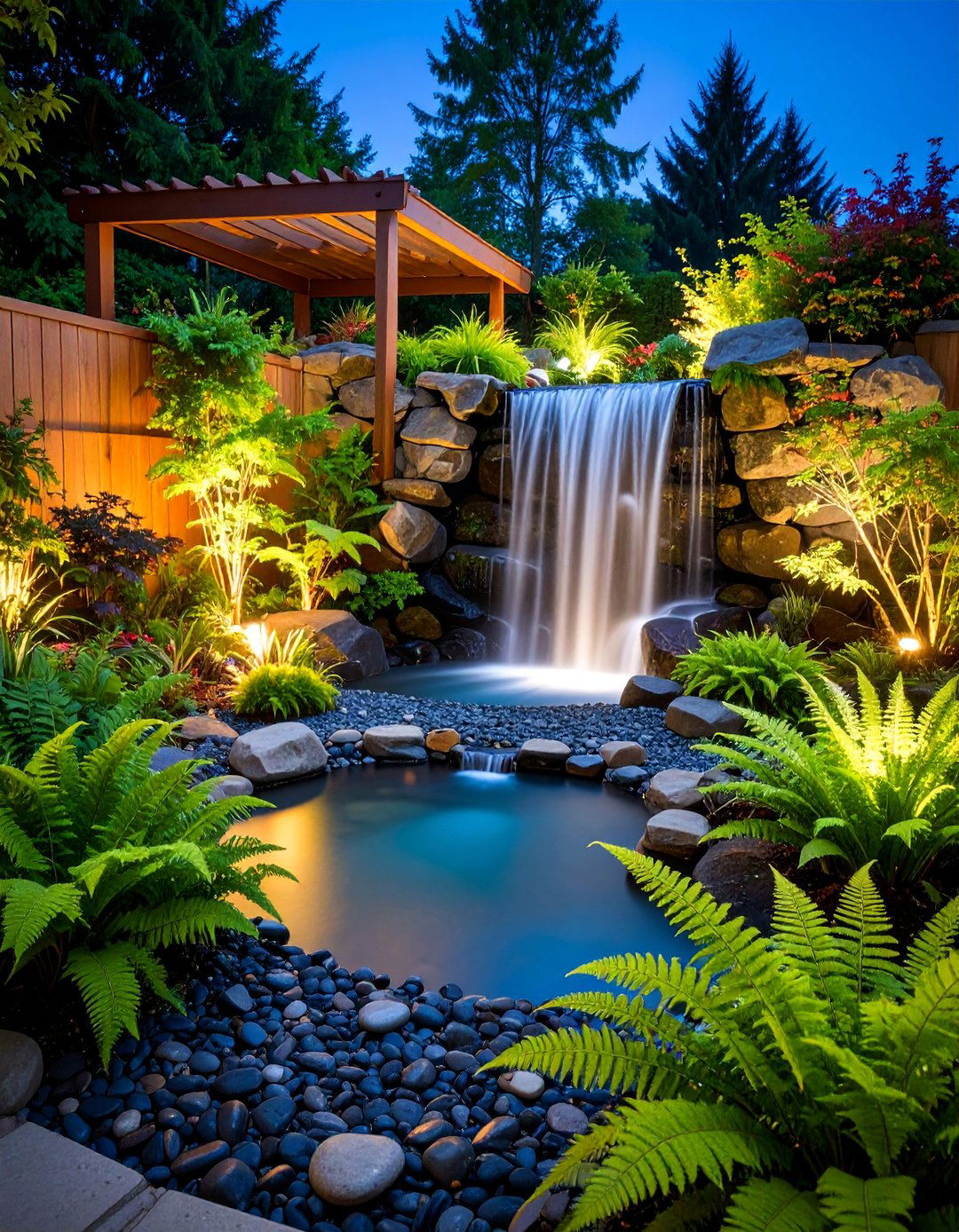
Unlike dry landscapes, this theme channels dynamic flow through a recirculating waterfall cascading over stacked basalt shelves into a pebble basin. Sound becomes the meditative pulse, masking traffic while focusing the mind. Flanking the water feature, deep green ferns and acorus grass thrive in perpetual spray, contrasting with bleached gravel in the rest of the yard. Stepping stones cross the basin’s edge, offering vantage points for reflection. A weather-worn cedar pergola arches overhead, draped in wisteria that perfumes the air each spring. LED strip lighting tucked beneath stone lips illuminates descending water sheets after dark, turning movement into shimmering sculpture.
5. Bamboo Privacy Zen Garden
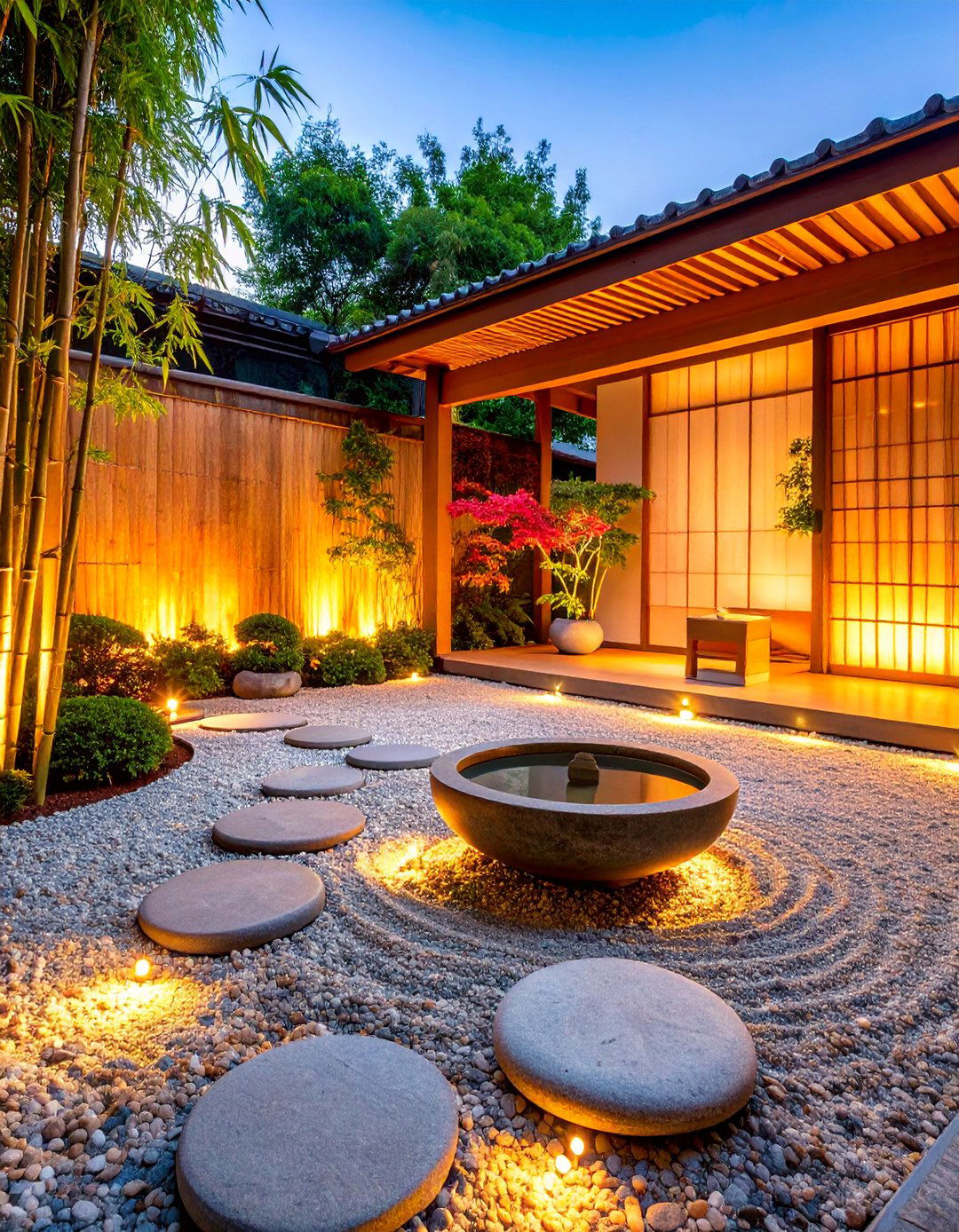
For homeowners craving seclusion, towering golden bamboo forms a living wall that filters harsh sunlight and muffles noise. Parallel lines of crushed granite underfoot echo the culms’ vertical rhythm, while black river stones outline planting beds for crisp separation. Within this sheltered cocoon, a low granite basin (tsukubai) with bamboo spout invites ritual hand-washing, reinforcing purity themes. Circular stepping pads of charcoal slate create a looping path encouraging mindful pacing. Discreet ground-level uplights graze bamboo stems at night, creating luminous bars against the sky. Seating appears as a simple zaisu floor chair on a rolled tatami mat, urging grounded posture.
6. Floating Deck Zen Garden
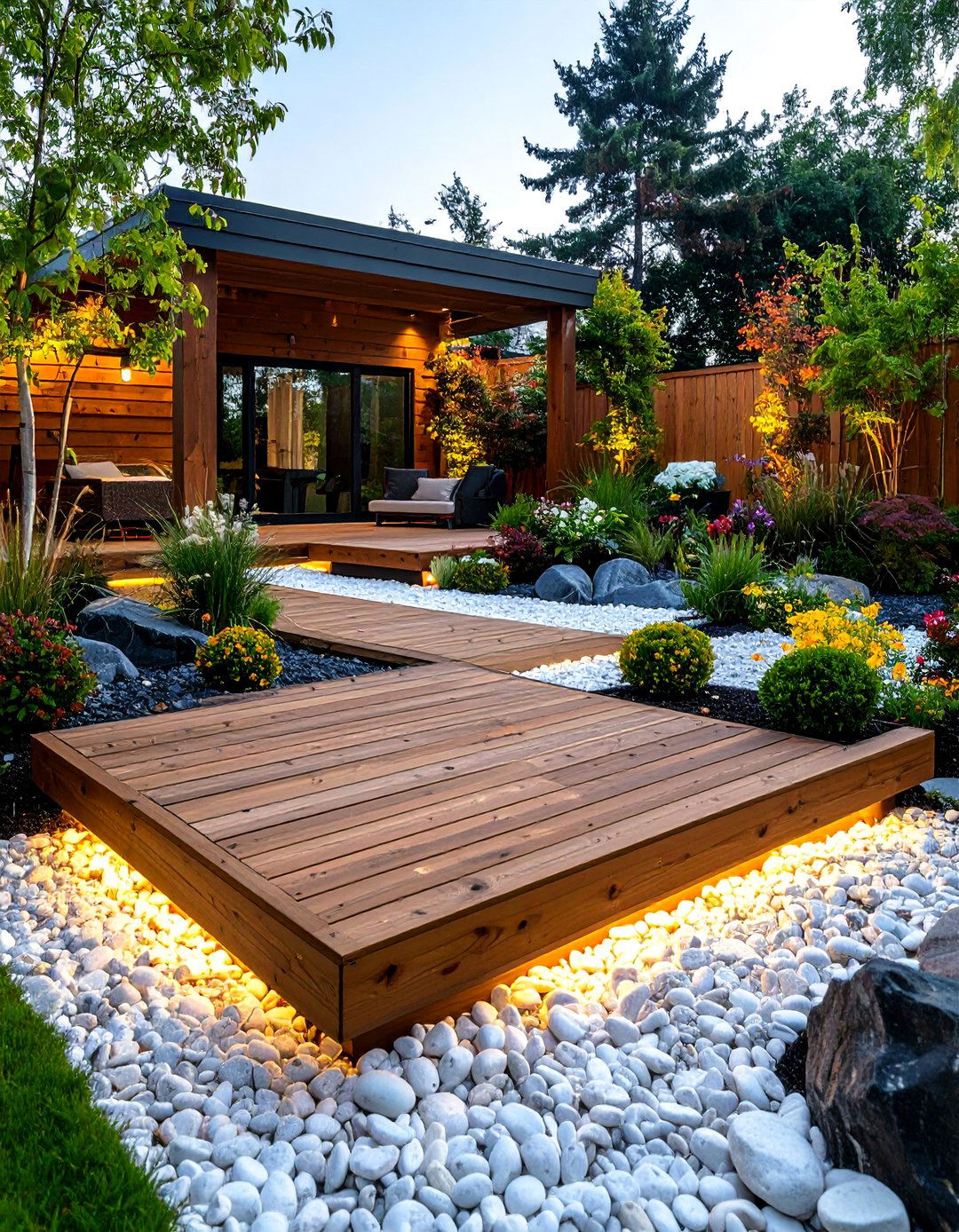
A raised cedar platform seemingly floats above raked gravel poured flush to its edges, creating a striking elevation change without railings. Integrated benches carved from the deck planks provide clutter-free perches. Below, white gravel contrasts with charcoal lava rocks arranged in minimalist clusters, representing islands adrift at sea. Narrow planters set into the deck host dwarf Japanese maples whose delicate forms soften angular lines. At twilight, recessed LED strips under the deck’s perimeter cast a gentle halo, heightening the hovering illusion. Wind chimes suspended from an overhead beam add an aural layer, turning evening breezes into musical cues for calm.
7. Lantern-Lit Night Zen Garden

When daytime tranquillity shifts to nocturnal introspection, ambient light becomes principal design material. Strategically placed stone lanterns (tōrō) of varying heights punctuate pale crushed granite, their soft candle-like LEDs casting radial pools that accentuate rake patterns. A dark basalt moon-viewing platform at one corner provides elevated perspective of illuminated textures across the garden. Low-growing mondo grass edging offers subtle greenery without breaking light continuity. Reflective stainless spheres nestled among pebbles mirror flickering lantern glow, adding dimension. An unobtrusive timer system fades each lantern sequentially after midnight, guiding visitors intuitively toward rest and closure.
8. Zen Garden with Koi Pond
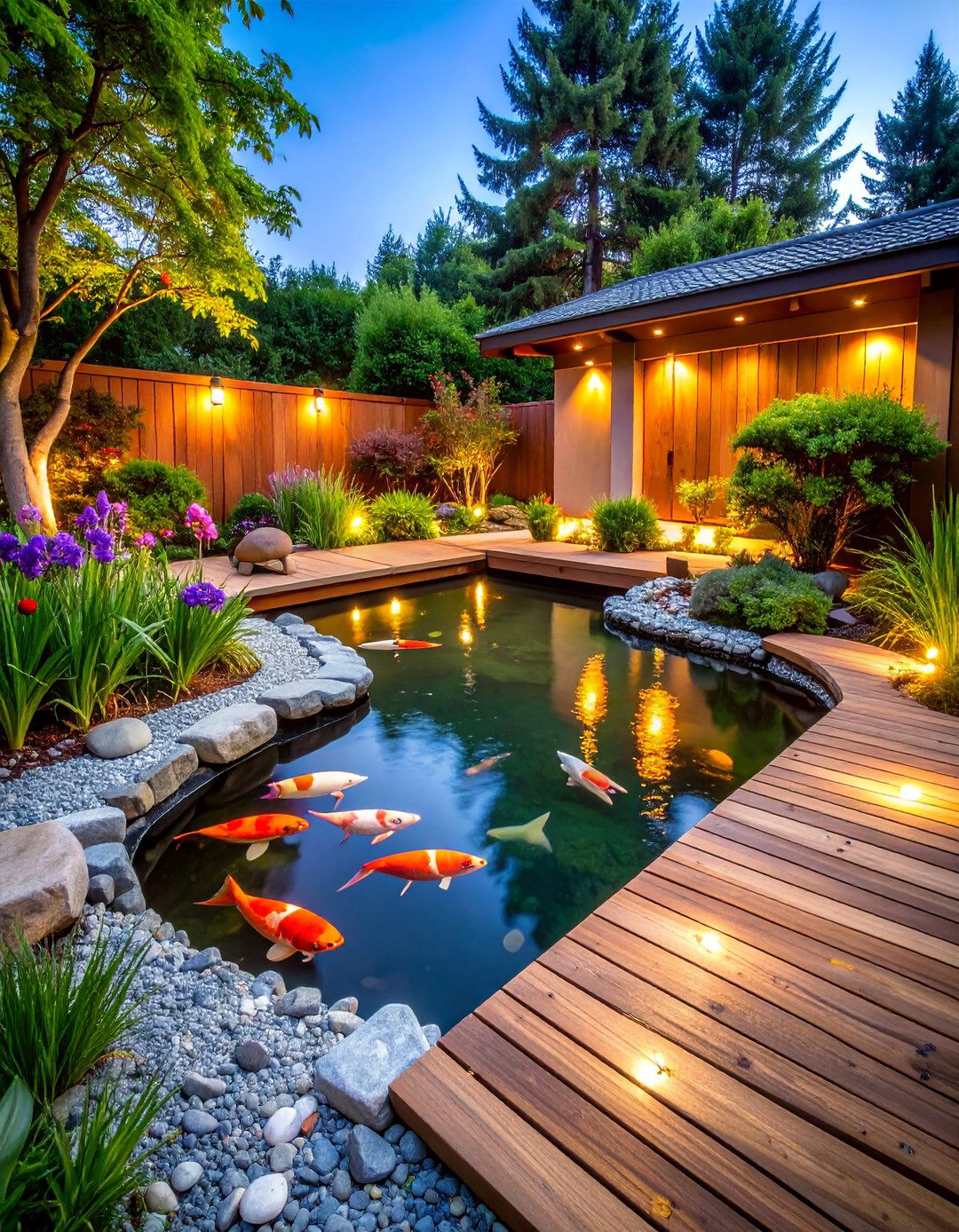
A mirror-smooth pond bordered by hand-split granite absorbs sky reflections and invites gentle focus on colored koi gliding beneath. Skimming across the water’s edge, a narrow cedar walkway grants intimate proximity without disrupting the ecosystem. Surrounding gravel raked in linear “current” patterns reinforces the aquatic narrative. Three sculptural boulders break the shoreline, giving fish shadowed shelter and balancing composition. Purple Japanese irises emerge at pond margins for seasonal color bursts while remaining faithful to restrained palette. Submerged lights create shimmering silhouettes of fish after dusk, weaving motion with stillness and extending meditative opportunities well into the night.
9. Zen Garden Dry Stream Bed
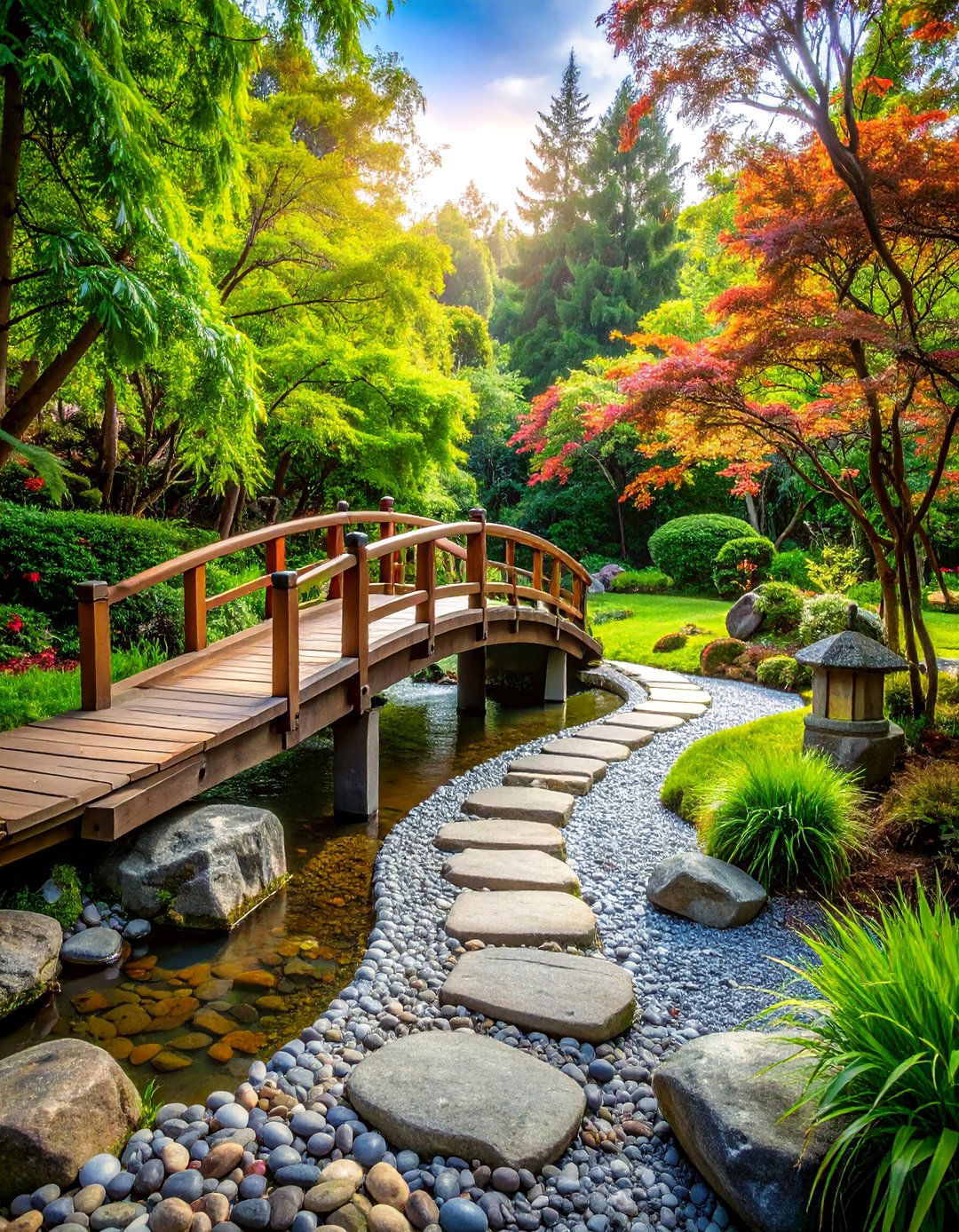
To simulate flowing water using solely mineral elements, this design sweeps gray-blue river pebbles through the landscape like a winding channel. Larger slate slabs bracket the “banks, ” while rippling rake lines drawn in adjacent white gravel evoke currents. Tall clumps of hakonechloa grass lean over the stone bed, mimicking reeds along a river. A delicate wooden footbridge spans the faux stream, offering both functional crossing and symbolic journey. For sound, a simple bamboo fountain drips rhythmically onto a flat stone near the starting point, creating audible “splashes” to complement the visual illusion of movement.
10. Contemporary Concrete Zen Garden
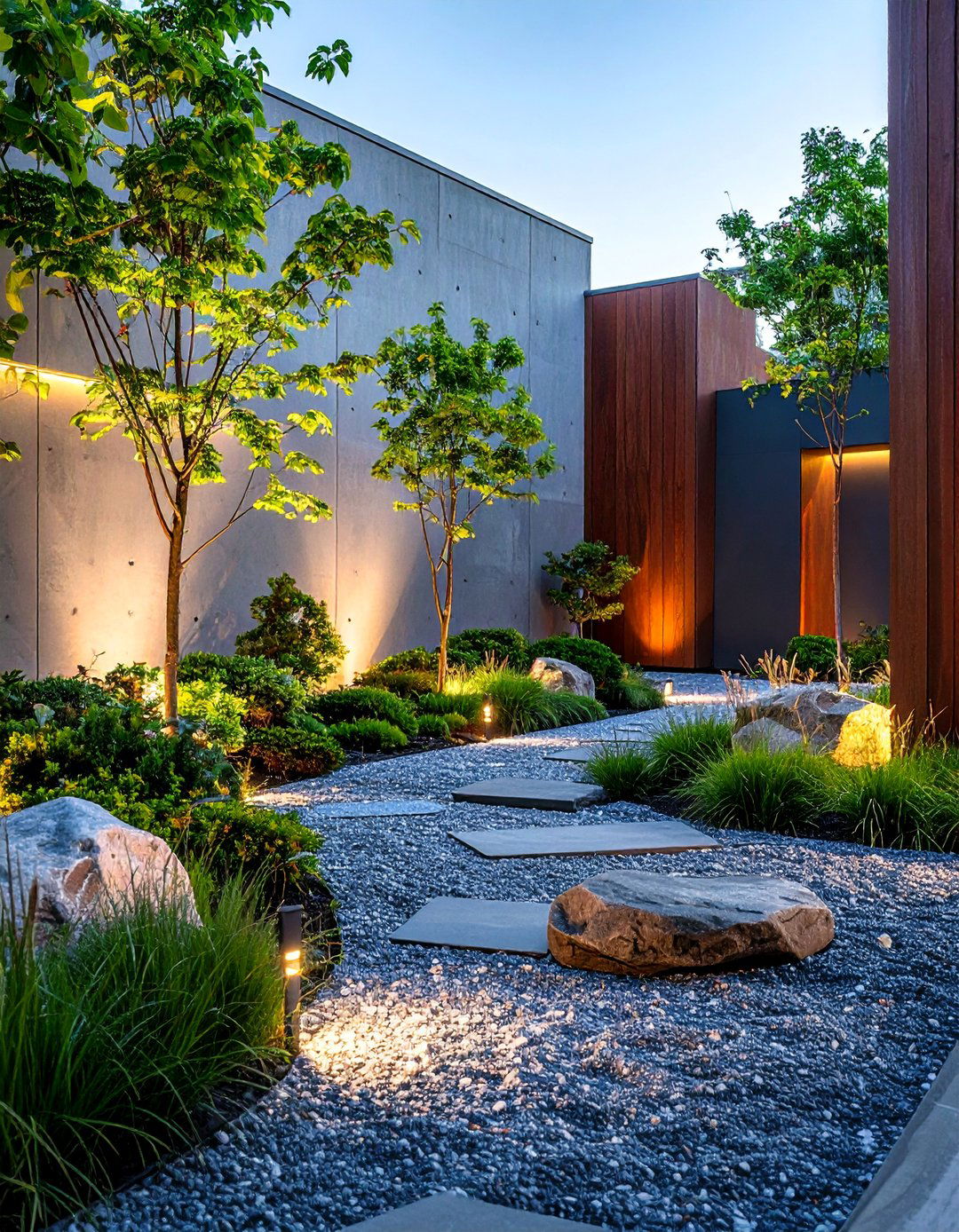
Modern architecture pairs effortlessly with raw concrete crafted into crisp planters, low retaining walls, and a polished meditation plinth. Graphite-tinted gravel blankets the ground, its cool hue harmonizing with surrounding slabs. Architectural grasses such as fescue erupt from rectilinear planter slots, their fine texture softening hard edges. At the center, a vertical corten steel monolith serves as focal art, weathering naturally while reflecting seasonal light. Linear LED channels embedded in concrete joints illuminate pathways in minimalist fashion. A matching concrete bench spans one wall, eliminating extraneous furnishings and highlighting the elegance of geometry, shadow, and sparse vegetation.
11. Rooftop Container Zen Garden

City dwellers can reimagine rooftops by grouping lightweight fiberglass containers filled with sand and carefully curated rocks. Wind-tolerant dwarf pines anchor each vessel, while smooth river stones provide sculptural contrast. Between planters, modular acacia decking establishes warm footing and quick drainage. Portable LED lanterns hang from a stainless pergola frame, transforming night scenes without extensive wiring. A roll-up bamboo screen mounts along the parapet, creating windbreaks and privacy. Despite weight restrictions, layered textures and elevations convey depth, and each planter’s raked sand can be refreshed easily, ensuring ongoing engagement with the meditative process.
12. Indoor Tabletop Zen Garden
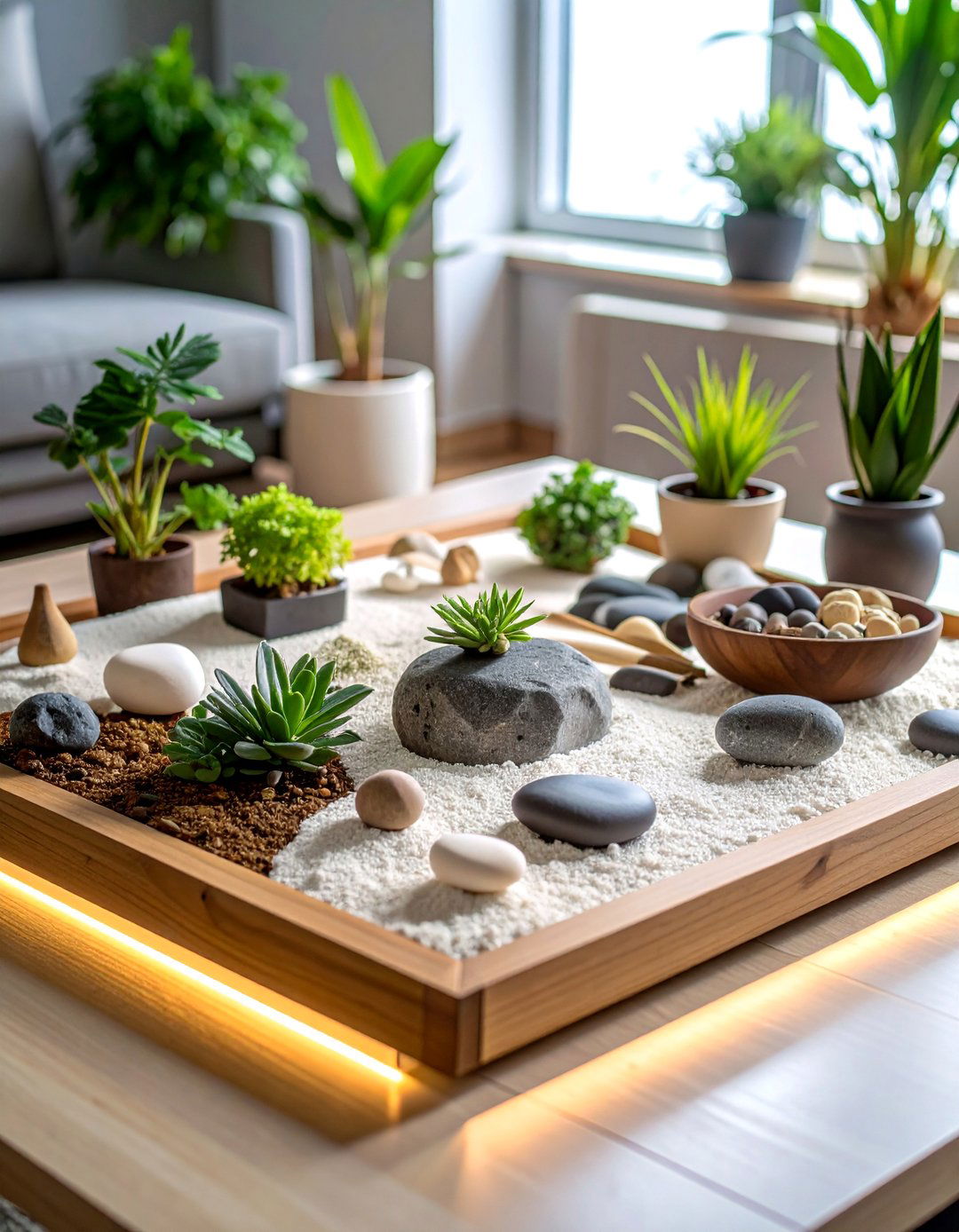
For those without outdoor space, a low teak coffee table converts into a miniature contemplative landscape. Fine white sand spreads within a recessed tray bordered by mitered wood edges. Two hand-sized basalt stones and a tiny patch of preserved moss depict mountain and meadow. A pocket-sized wooden rake allows users to redraw swirling patterns during breaks, promoting office mindfulness. Soft LED strip lights under the table rim illuminate the sand, making the garden glow in dim interiors. Essential oil diffusers waft hinoki cypress fragrance, completing an immersive multi-sensory retreat within arm’s reach.
13. Succulent Desert Zen Garden
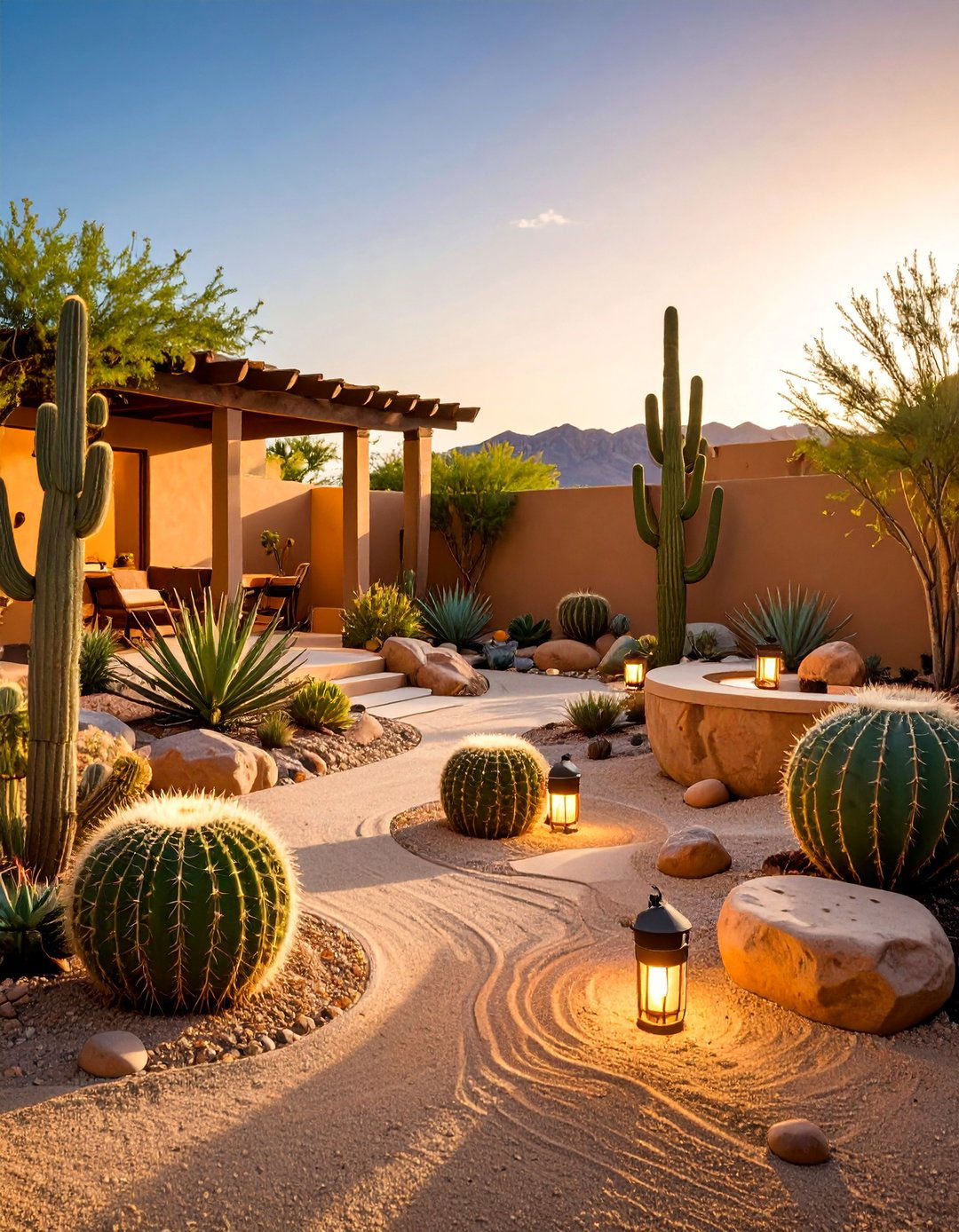
Owing to drought concerns, water-wise succulents such as haworthia, echeveria, and golden barrel cactus replace traditional moss. Sand colored gravels — from ivory to caramel — form undulating dunes across a sun-drenched site. Oversized red sandstone boulders rise sporadically, echoing desert mesas and casting elongated afternoon shadows. Drip irrigation tubing hides beneath the surface, delivering minimal moisture directly to roots. Weathered steel edging holds soil while complementing the warm palette. As twilight cools, solar path lights with amber filters bathe spiky silhouettes in soft glow, emphasizing contrast between harsh forms and tranquil intent.
14. Forest Edge Zen Garden
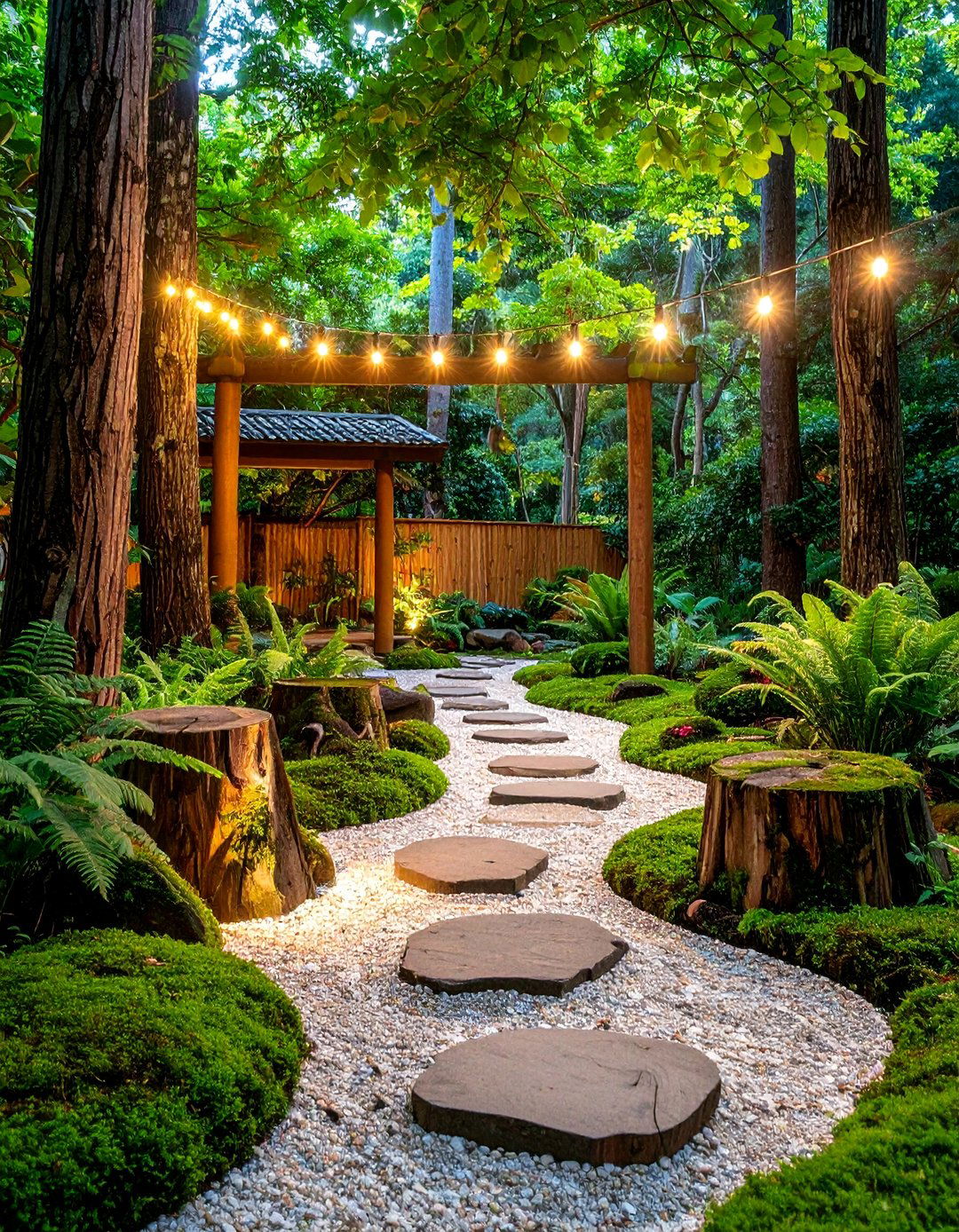
Bordering a wooded lot, this concept blurs cultivated space with natural understory. Meandering gravel trails weave around moss-covered stumps and native ferns, preserving existing tree roots. Flat granite slabs set flush with the ground allow effortless strolling while appearing almost accidental. A rustic bamboo gate frames the entrance, marking transition from daily bustle to woodland hush. Whispering leaves above become integral soundscapes, eliminating need for artificial water features. Subtle string lights threaded along low branches create overhead stars, guiding night wanderers without overpowering dark serenity.
15. Japanese Bridge Zen Garden
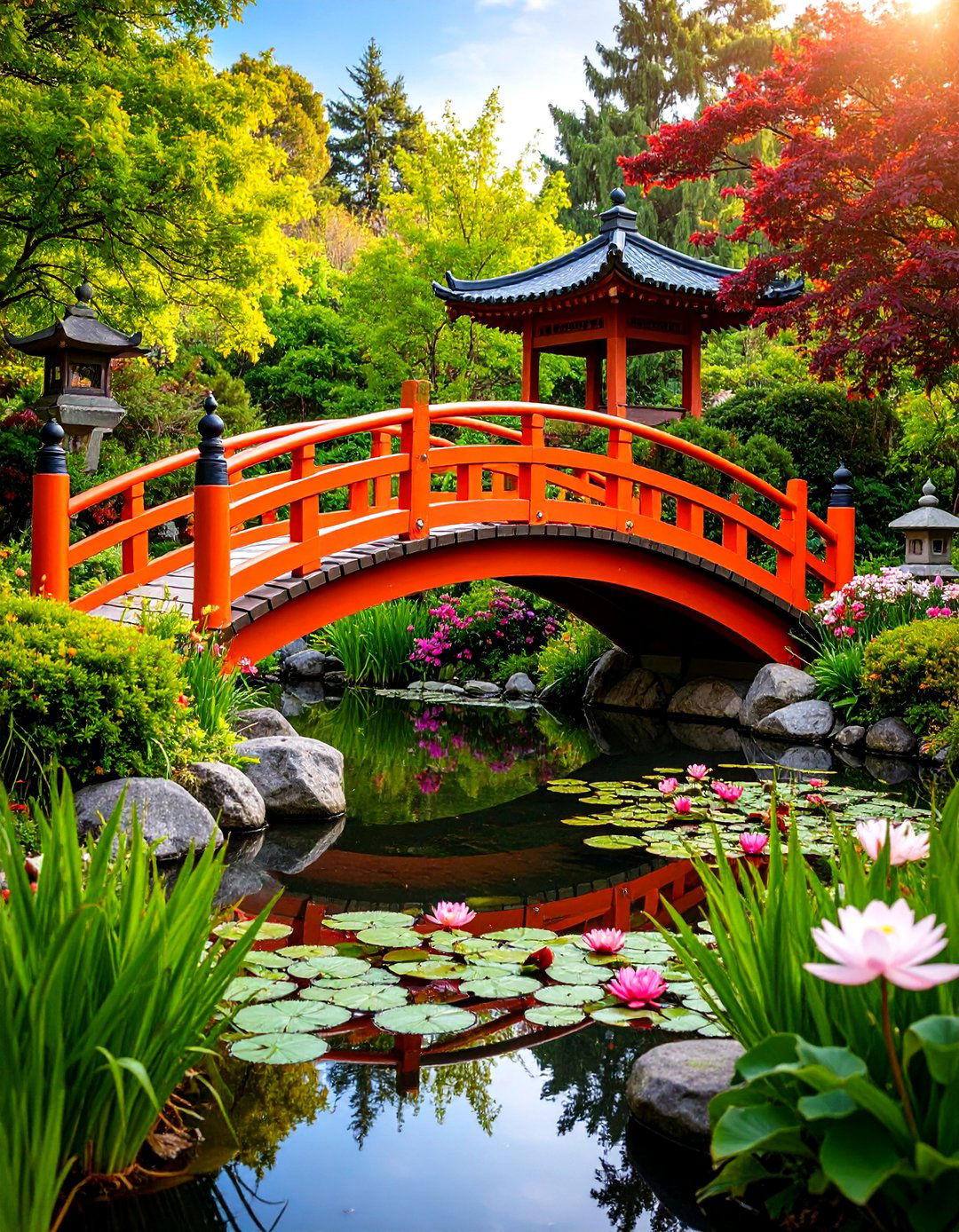
A graceful red-stained cedar bridge arches over a shallow reflective pool, drawing focus and guiding circulation simultaneously. The curved structure contrasts with horizontal gravel planes raked beneath open sky. On either side, clusters of black river stones symbolize islands, while delicate water lilies float beneath the bridge, adding seasonal blooms. A pair of stone lanterns flanks the entrance, framing photographs and reinforcing traditional cues. Under-bridge lighting refracts off ripples, producing shifting patterns on underside planks and enhancing sense of movement even when waters lie still.
16. Stone Path Meditation Zen Garden

What begins as a straight entry walk subtly narrows into an irregular stepping-stone route, compelling walkers to slow their pace. Slabs of honed granite rest upon raked gravel, elevating each step physically and metaphorically. Flanking beds feature neatly clipped azaleas whose spring blossoms inject brief, poignant color before returning to deep green. A granite bench positioned halfway offers invitation to pause, encouraging reflection on journey versus destination. Down-lighting from unobtrusive bollards ensures safe footing after dusk while maintaining shadow interplay central to Zen aesthetics.
17. Tea Ceremony Zen Garden
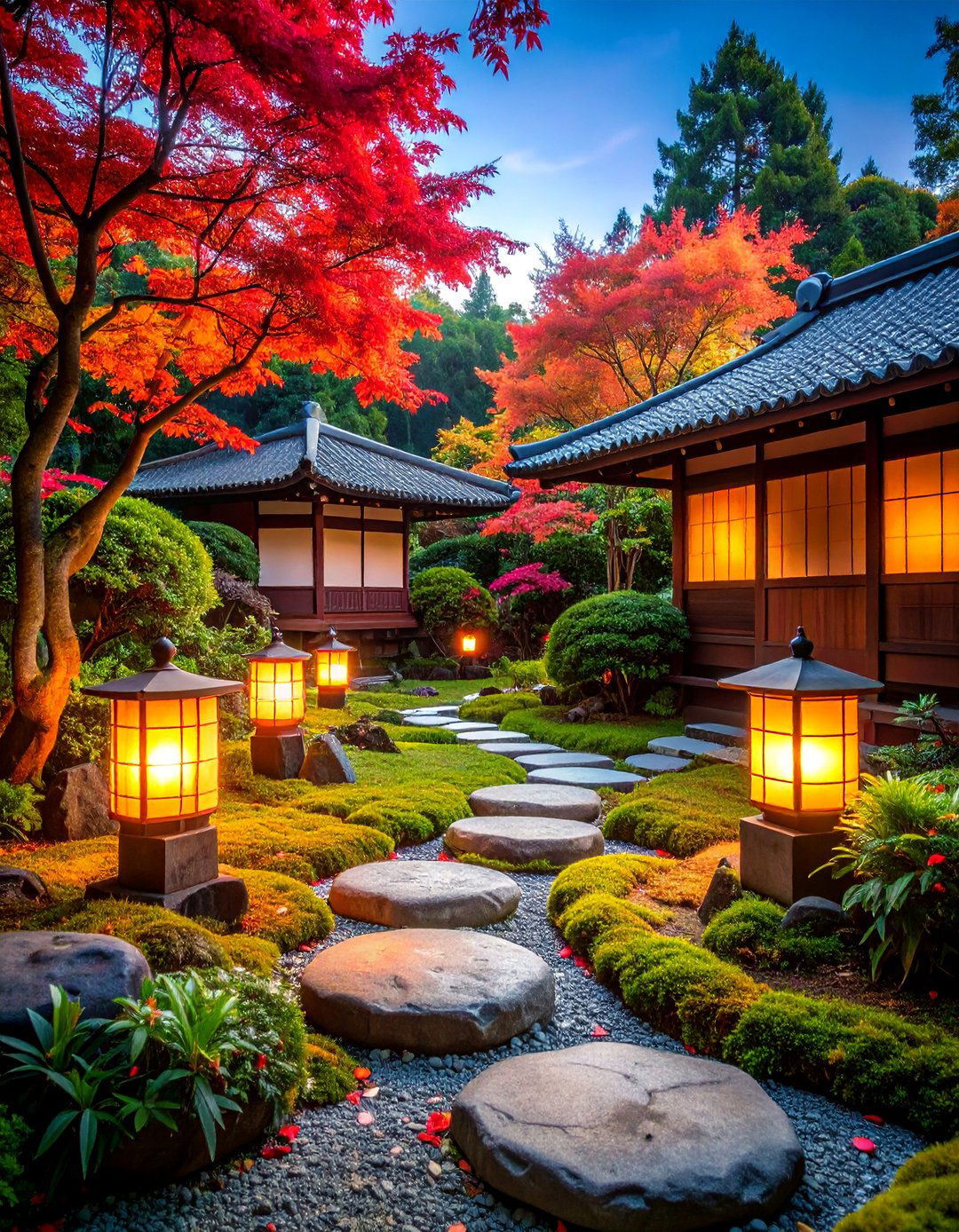
Designed to accompany a chashitsu tea house, this garden emphasizes ritual preparation and sensory sequencing. Starting at a modest entry gate, guests follow a roji (dewy path) of staggered stones set in moss to cleanse the mind. Midway, a tsukubai water basin with bamboo ladle offers purification through hand washing. Surrounding plantings remain primarily evergreens — camellia, sasa bamboo — to keep focus on form rather than fleeting color. Gravel areas remain un-raked until after ceremonies, symbolizing fresh beginnings. Evening events rely on subtle andon lanterns diffusing warm light through paper shoji screens, merging indoor and outdoor calm.
18. Reclaimed Wood Zen Garden

Sustainability meets tranquillity by reusing weathered timbers from dismantled barns. These beams frame rectangular beds of charcoal granite chippings, their patina injecting soulful warmth. Within, sculpted driftwood pieces replace conventional rock formations, embodying impermanence through organic contours. Tufts of silver fescue grow between planks, blurring boundaries. A salvaged wooden door, set vertically as a free-standing “gate, ” offers symbolic passage. Solar lights mounted on the wood surfaces highlight cracks and grain at night, honoring history while illuminating present-moment awareness.
19. Sand-and-Stone Courtyard Zen Garden

Courtyard walls painted chalk white amplify sunlight bouncing off pale sand flooring. Dark lava rocks grouped in odd numbers anchor composition, their rough texture contrasting with ultra-fine silica beneath. Reed fencing hides service areas, maintaining uninterrupted minimalism. Seating manifests as low canvas cushions stored in a cedar box, deployed only during meditation to avoid permanent clutter. Overhead, retractable sail shades modulate sun intensity without adding visual weight. Evening lanterns emit cool white light, enhancing monochromatic contrasts and drawing attention to every grain and shadow.
20. Compact Balcony Zen Garden
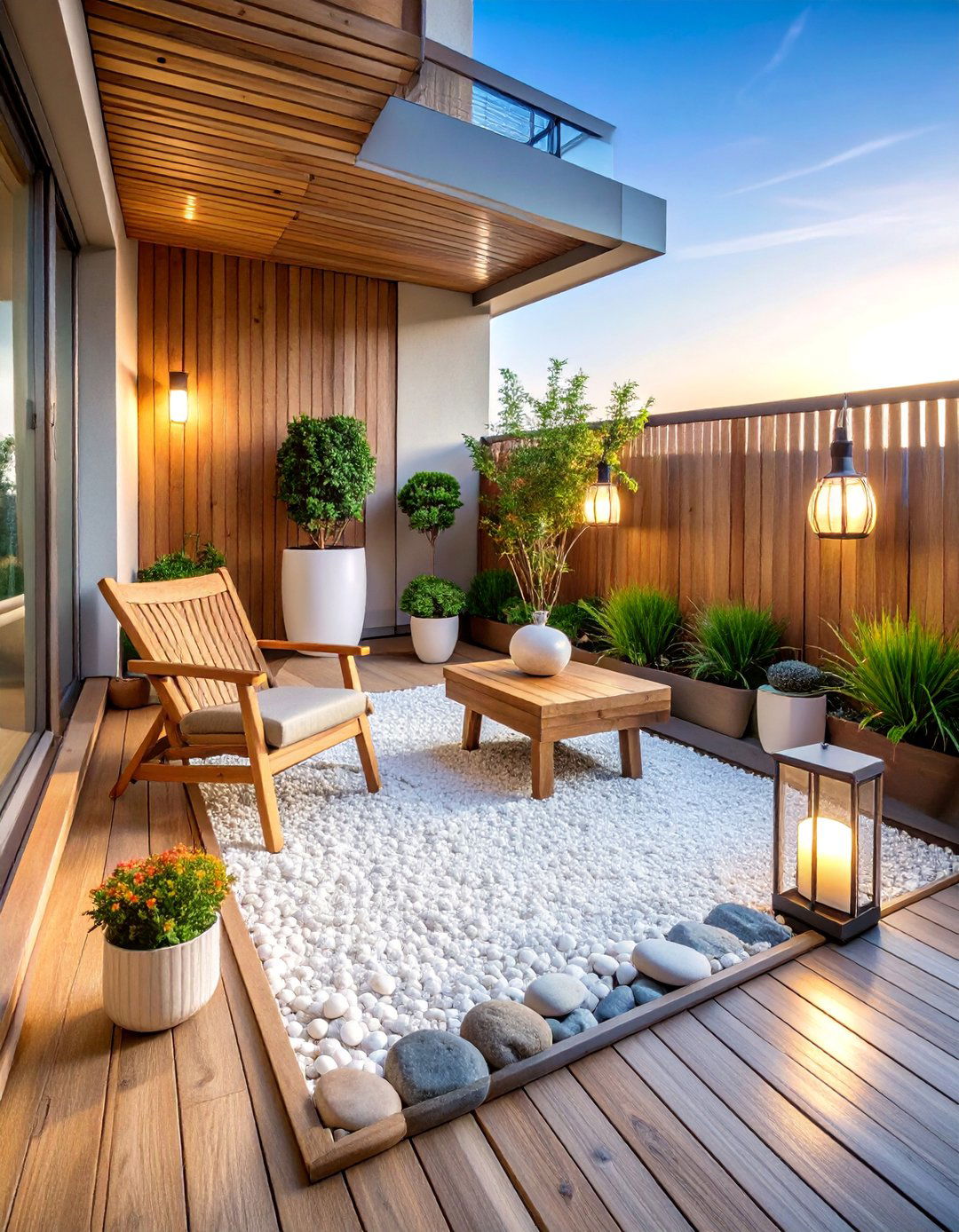
Even a four-foot balcony converts to sanctuary through vertical ingenuity. A slim cedar planter box spans the railing, filled with white gravel and two polished jade stones. Beneath, interlocking EVA foam mats printed to resemble tatami create barefoot comfort and quick drainage. Roll-up reed blinds provide privacy and dappled shade for a tiny dwarf hinoki cypress in a corner pot. A folding bamboo chair and miniature table accommodate tea rituals yet store flat when space is needed. Battery-operated lanterns clip onto the railing, offering evening ambiance without outlets.
21. Circular Spiral Zen Garden

Surprisingly, geometry alone can induce calm. A perfect circle of compressed gravel lies flush with surrounding lawn, defined by hidden steel edging. Within, dark river pebbles spiral from center to edge, guiding raking patterns into hypnotic swirls. A solitary granite sphere sits at the focal point, representing stillness amidst motion. Visitors enter via a discreet gap, then mindfully follow the spiral path while re-raking lines behind them. Low, ring-shaped LED tape embedded in the perimeter activates at dusk, tracing geometry with soft radiance and reinforcing infinite continuity.
22. Zen Garden with Bonsai Grove
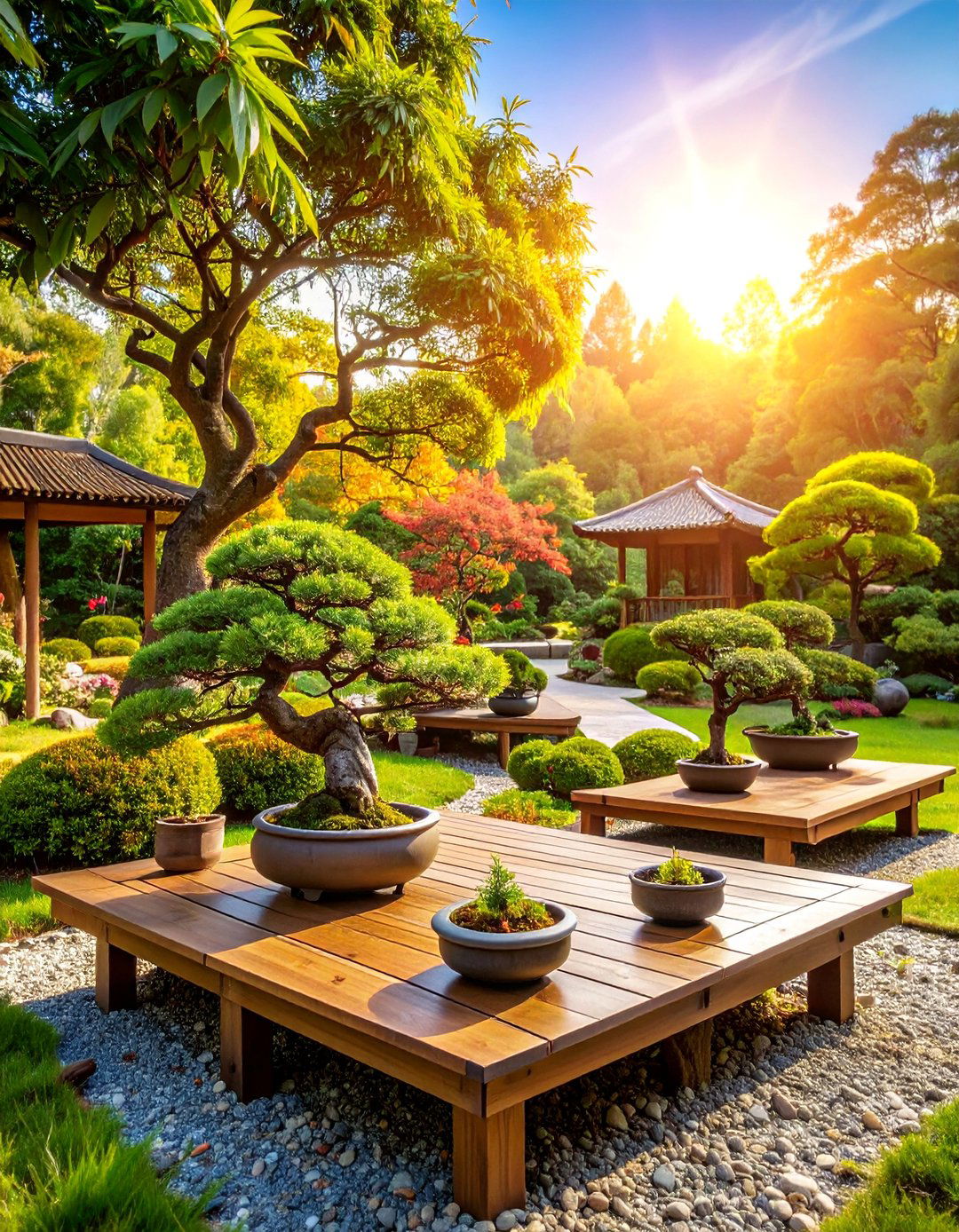
Instead of a single specimen, an elevated wooden platform hosts a curated collection of bonsai in ceramic pots, creating a miniature forest. Gravel paths surrounding the deck remain clear, focusing attention upward onto living sculptures. Seasonal rotation of maples, junipers, and flowering quince provides evolving vistas without redesigning groundwork. Hidden drip lines simplify watering while preventing overspray on gravel. A simple bamboo trellis overhead diffuses midday sun, mimicking mountain light where bonsai ancestors once grew. Visitors observe and prune branches, integrating maintenance into mindful practice.
23. Monochrome White Zen Garden
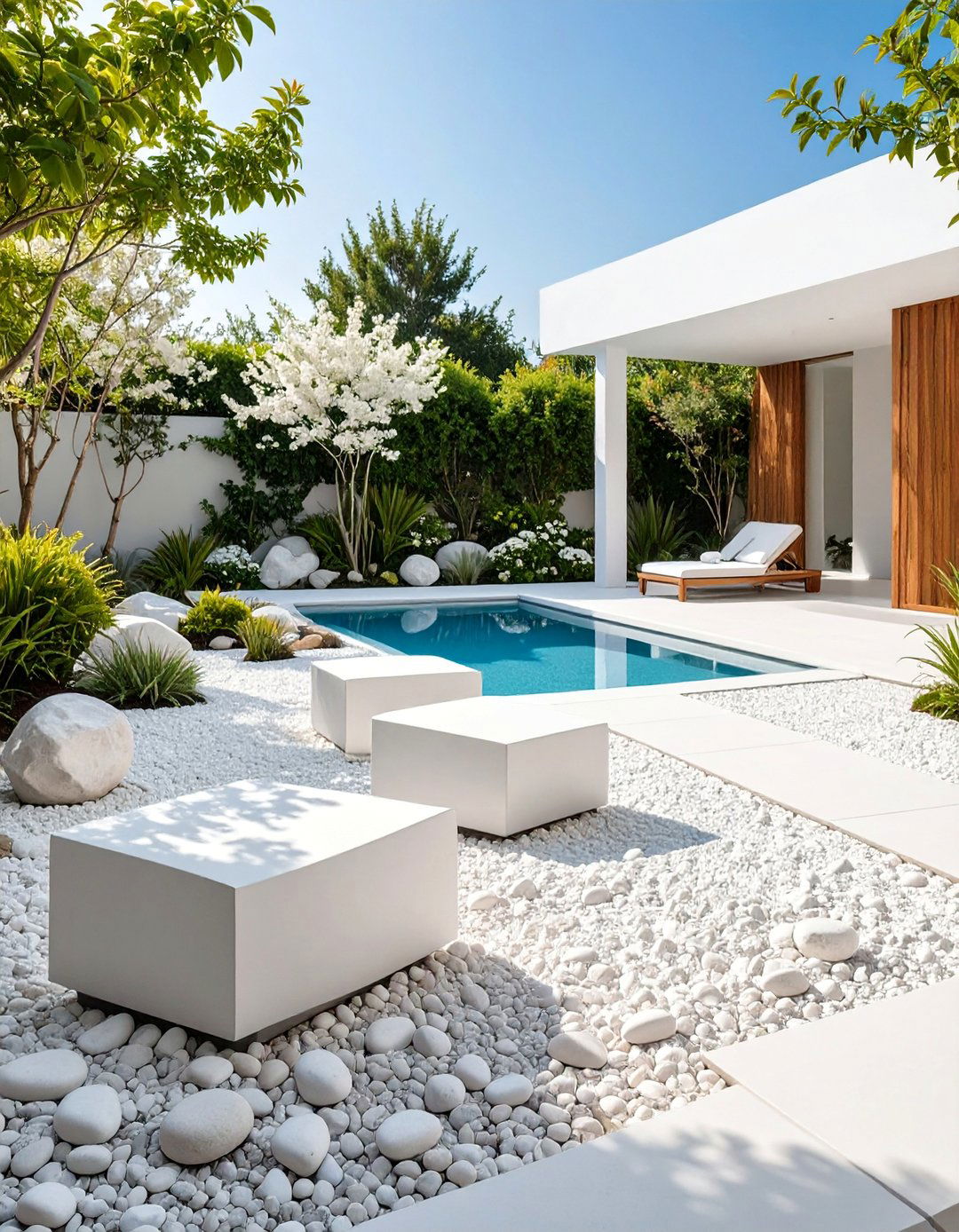
For extreme minimalists, a palette limited to whites and grays magnifies subtle forms and shadows. Bleached gravel blankets the ground, bordered by smooth alabaster rocks. Pale silver torchlight plants add faintly greenish foliage yet uphold near-monochrome integrity. A rectangular reflecting pool lined with white mosaic glass mirrors clouds, erasing boundaries between earth and sky. Seating appears as a low, white concrete cube set off-center for asymmetrical tension. At night, cool LEDs maintain color fidelity, ensuring contemplative purity free from chromatic distraction.
24. Zen Garden with Sculptural Boulders

Certainly, commanding stones can define space as art. Five monolithic granite boulders, each unique in texture and hue, rise from raked gravel like mountains piercing clouds. Orientation follows the “five mountains” concept, with tallest placed rear center and smaller stones stepping forward. Gravel patterns radiate outward, highlighting mass versus void. Minimal vegetation — just a ring of creeping thyme — softens bases without challenging dominance. Spotlights installed at low angles graze rock faces, revealing veins and fissures that resemble ancient landscapes captured in macro scale.
25. Seasonal Flower Accent Zen Garden
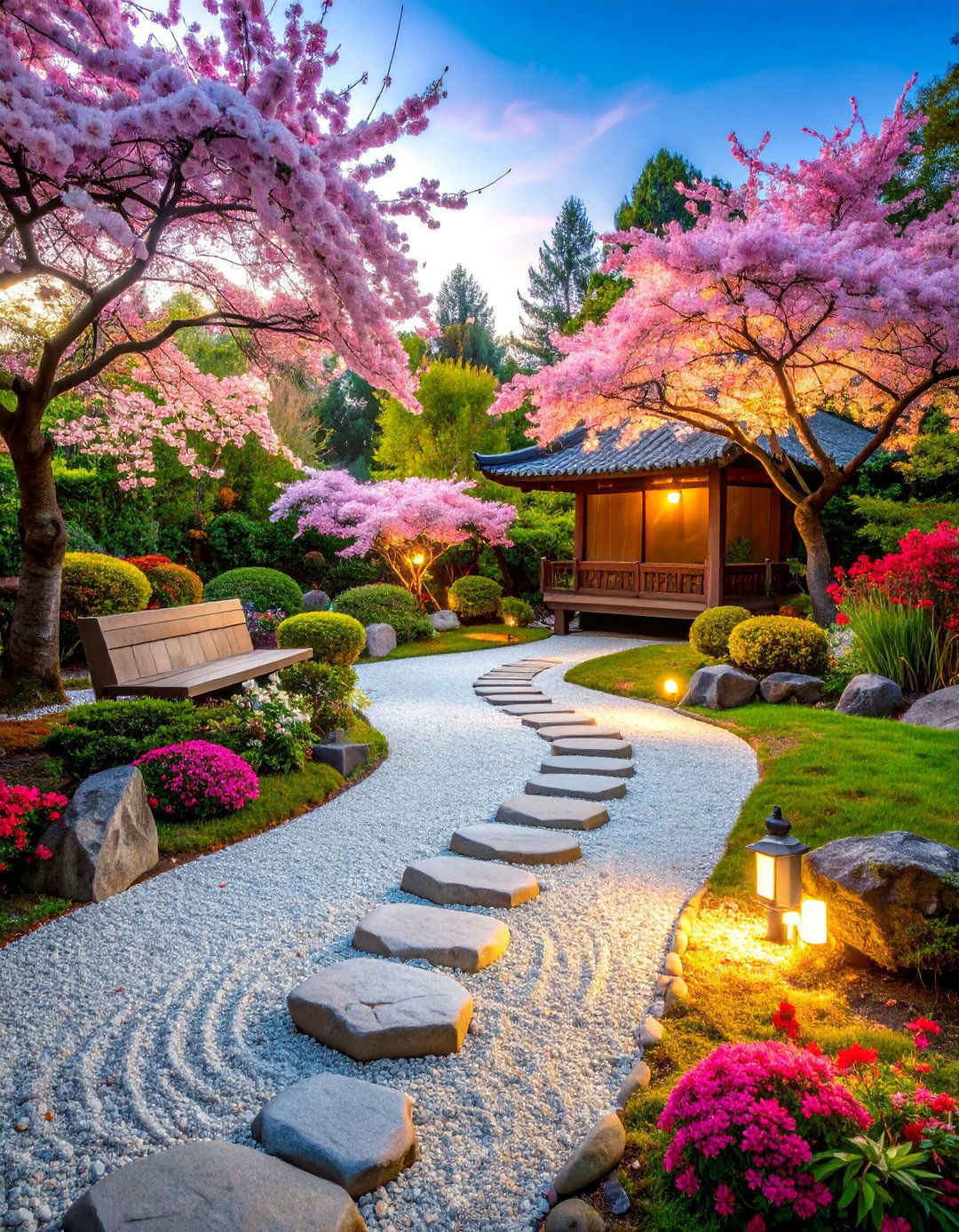
While Zen tradition favors restraint, judicious color can mark passing seasons. Structured beds of pale gravel host low swaths of flowering groundcovers — white wintersweet in late winter, pink cherry petals in spring, indigo iris in summer, and fiery dwarf maples come autumn. Each bloom phase is isolated, ensuring one highlight at a time. Neutral granite benches offer seating without stealing show. After petals fall, gardeners rake fresh patterns, clearing remnants and resetting for next cycle. Subdued path lights dim during peak bloom to let natural hues shine, embodying impermanence through evolving beauty.
Conclusion:
From minimalist gravel planes to lush moss carpets and rooftop containers, Zen gardens adapt to every climate, budget, and footprint. Prioritize balance, simplicity, and sensory engagement, and any of these 25 thematic blueprints can cultivate daily mindfulness right at home.








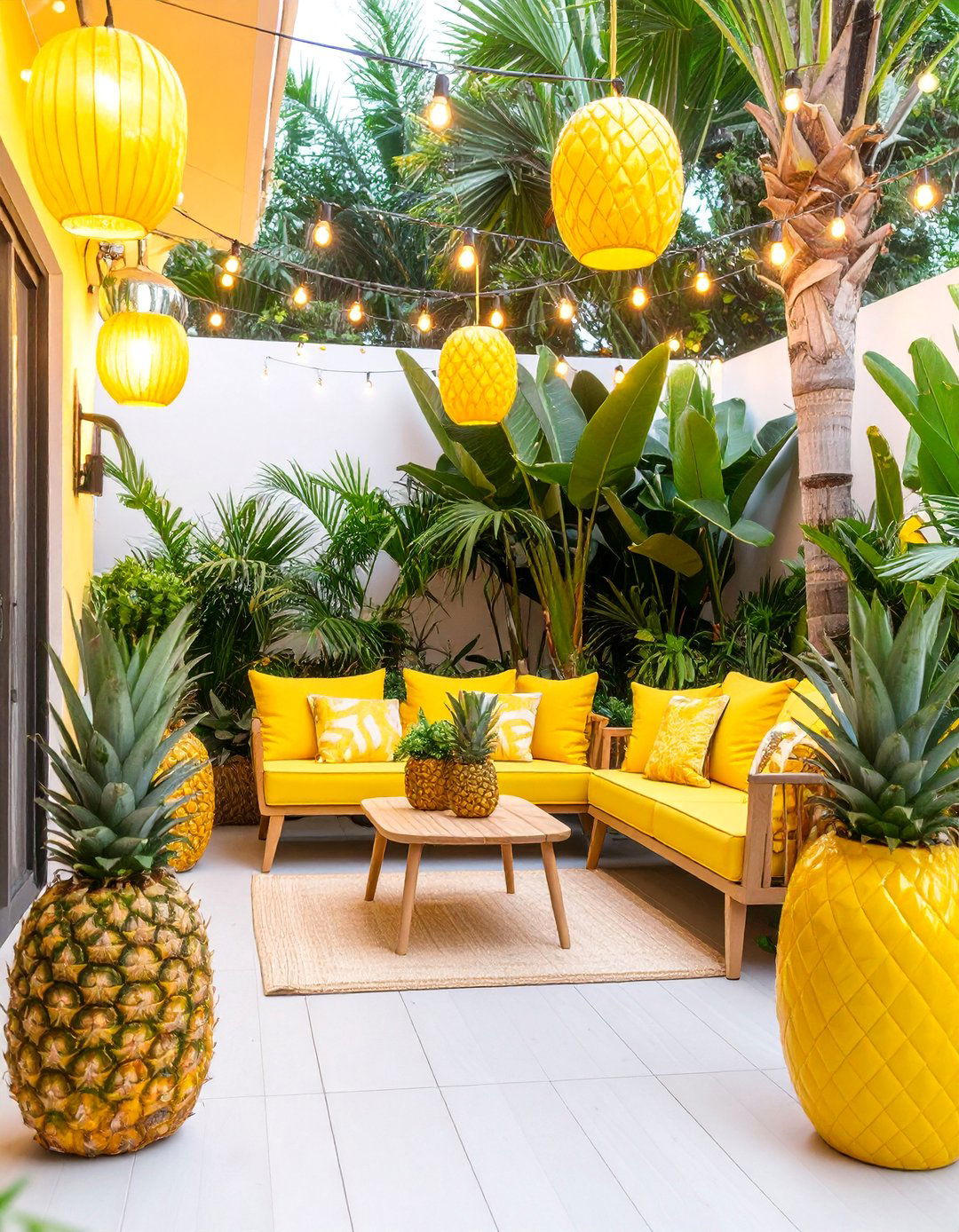

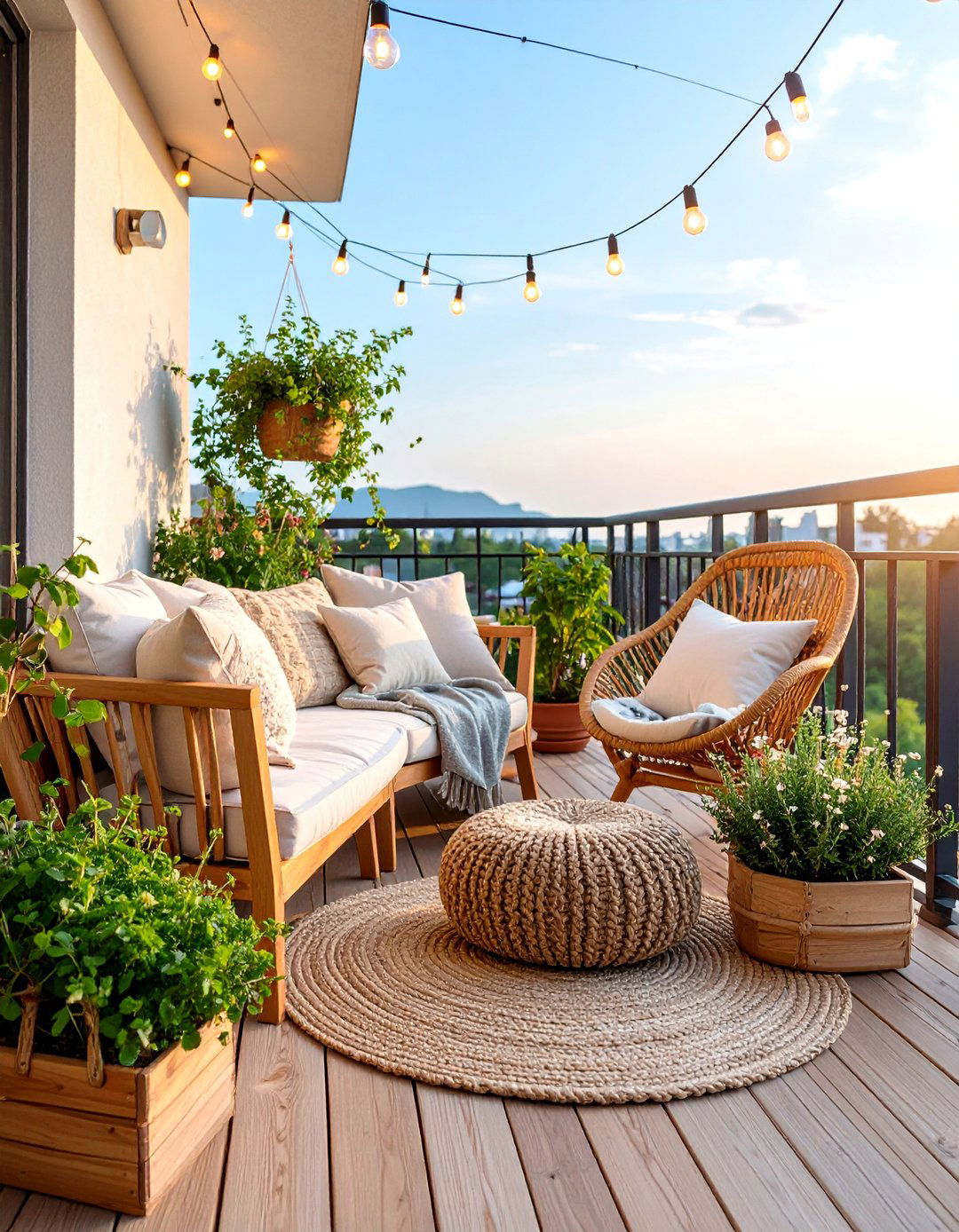
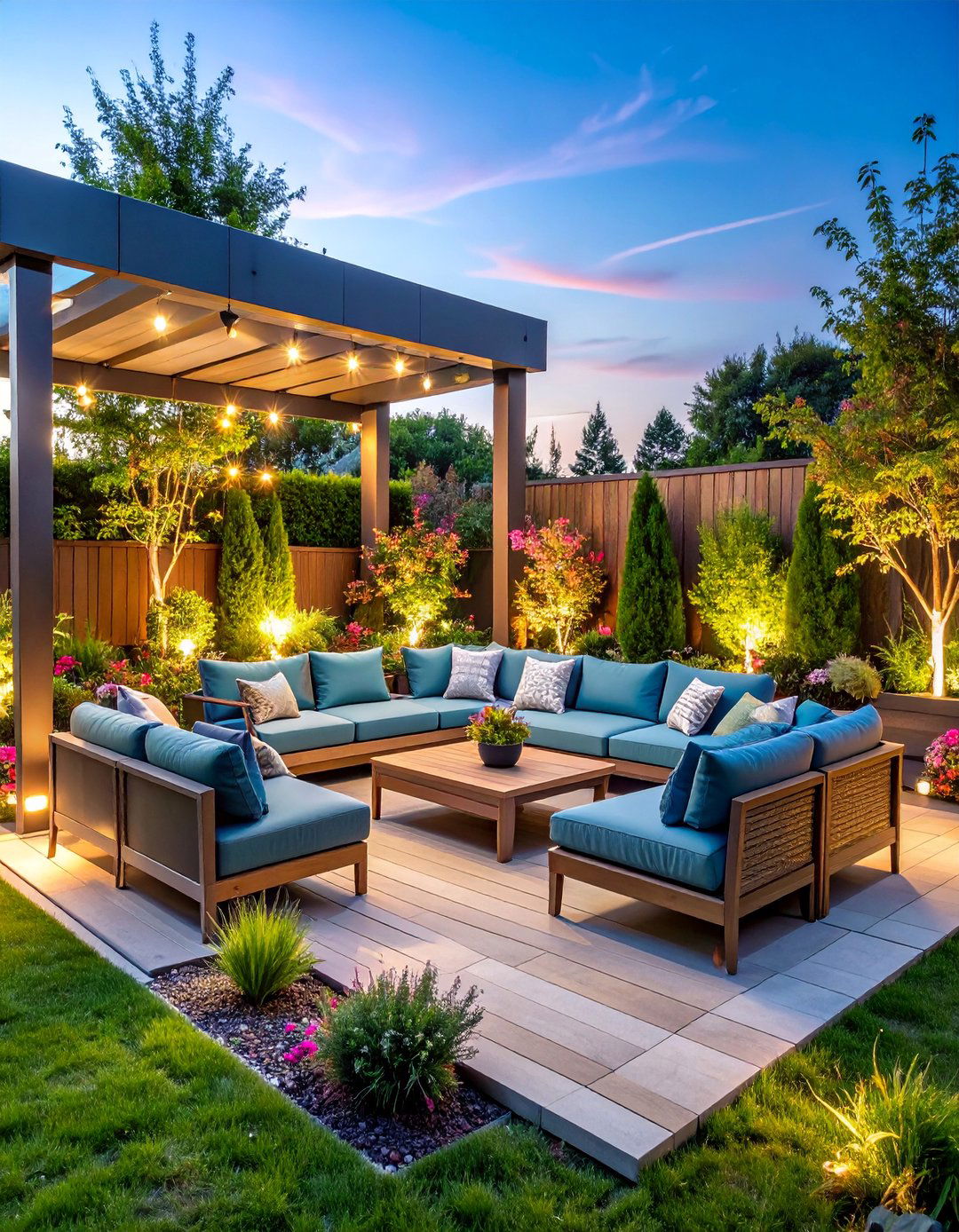
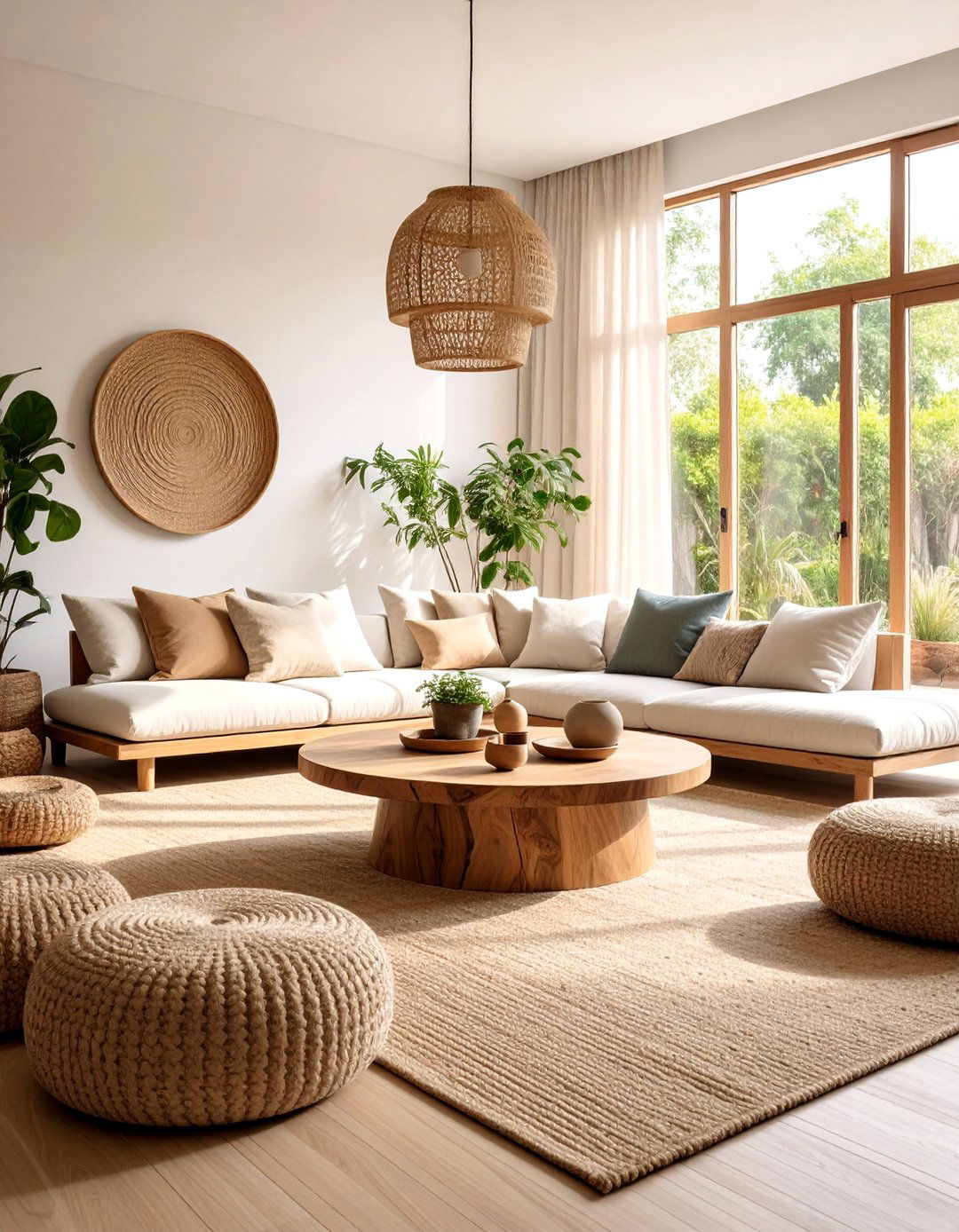
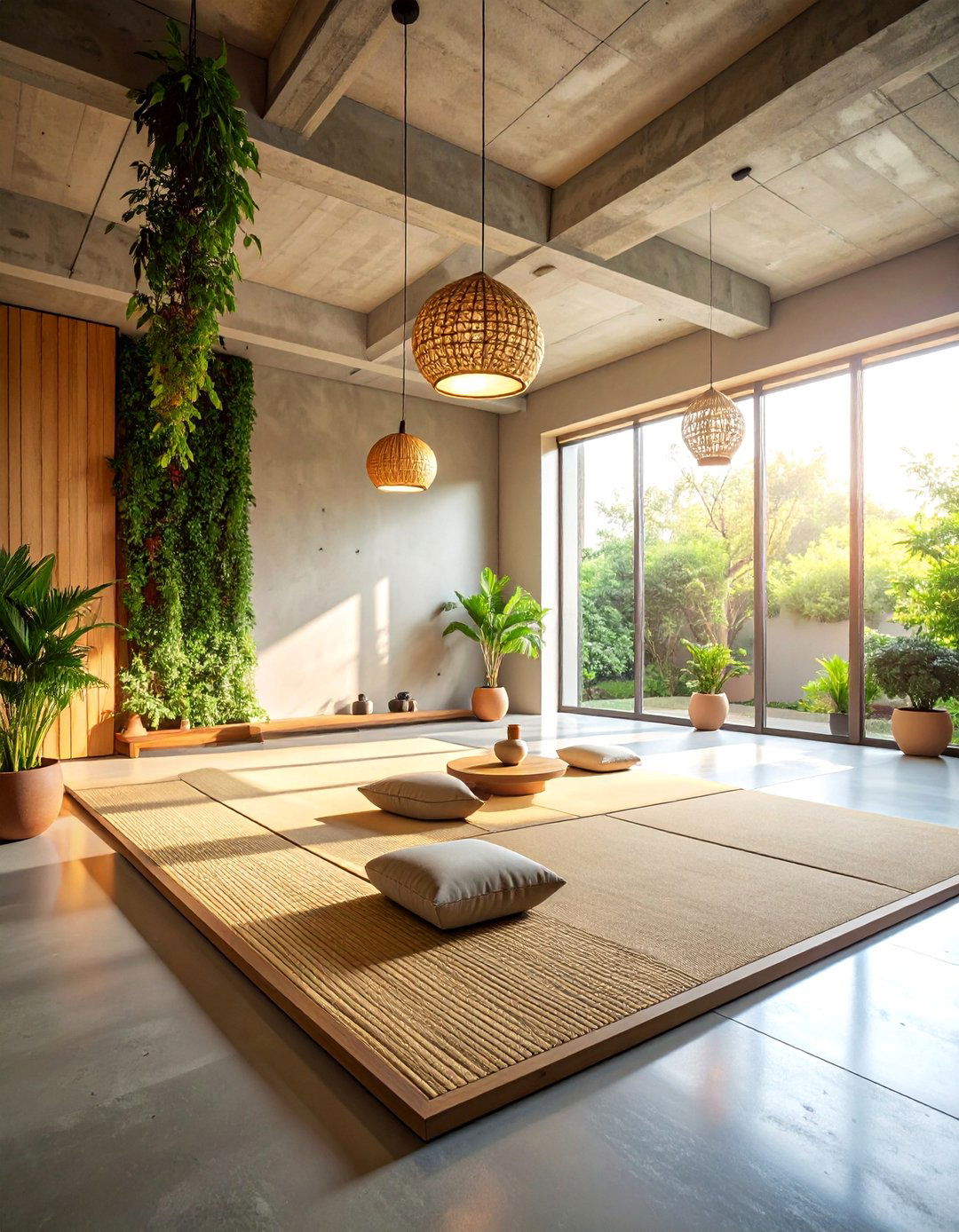
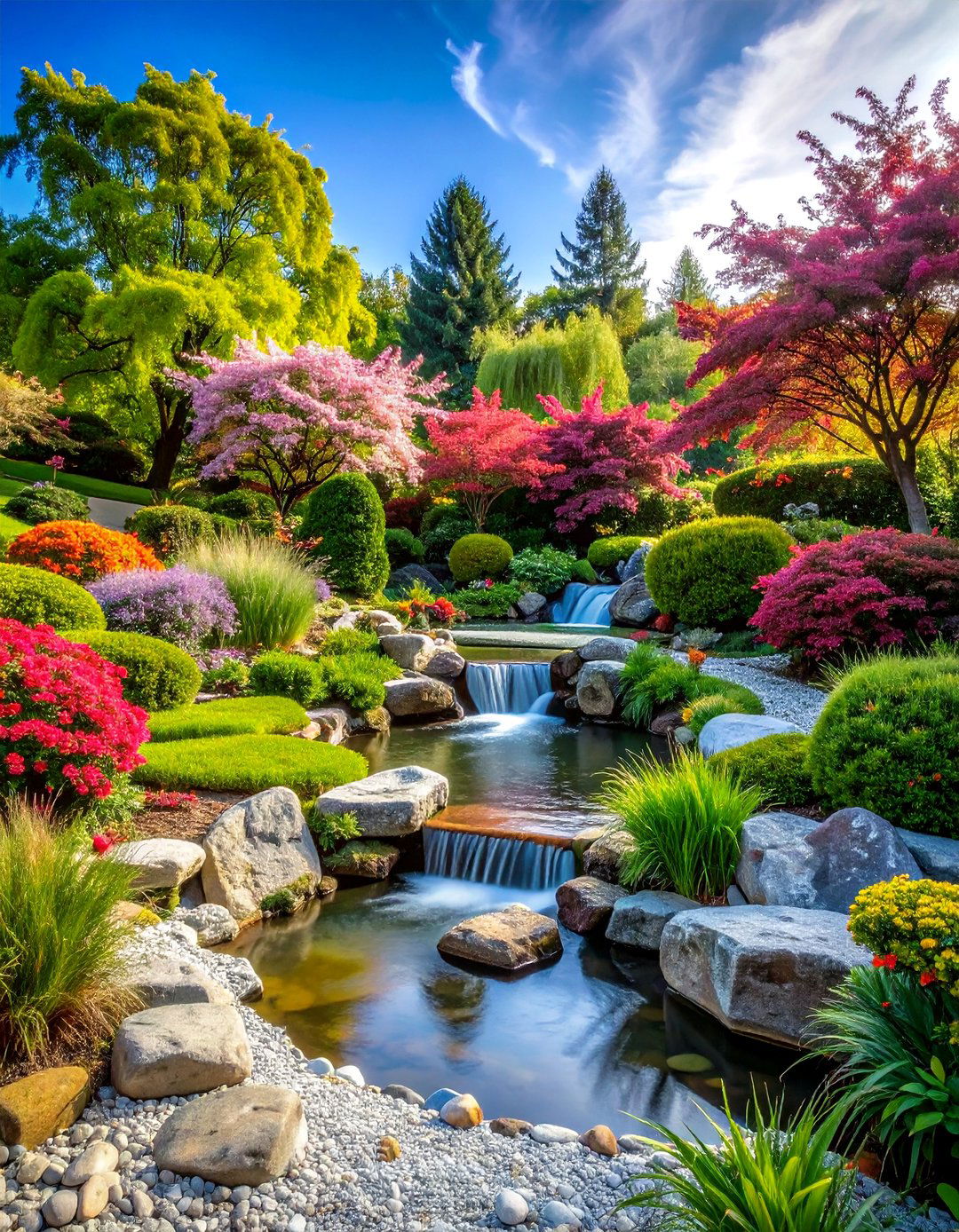
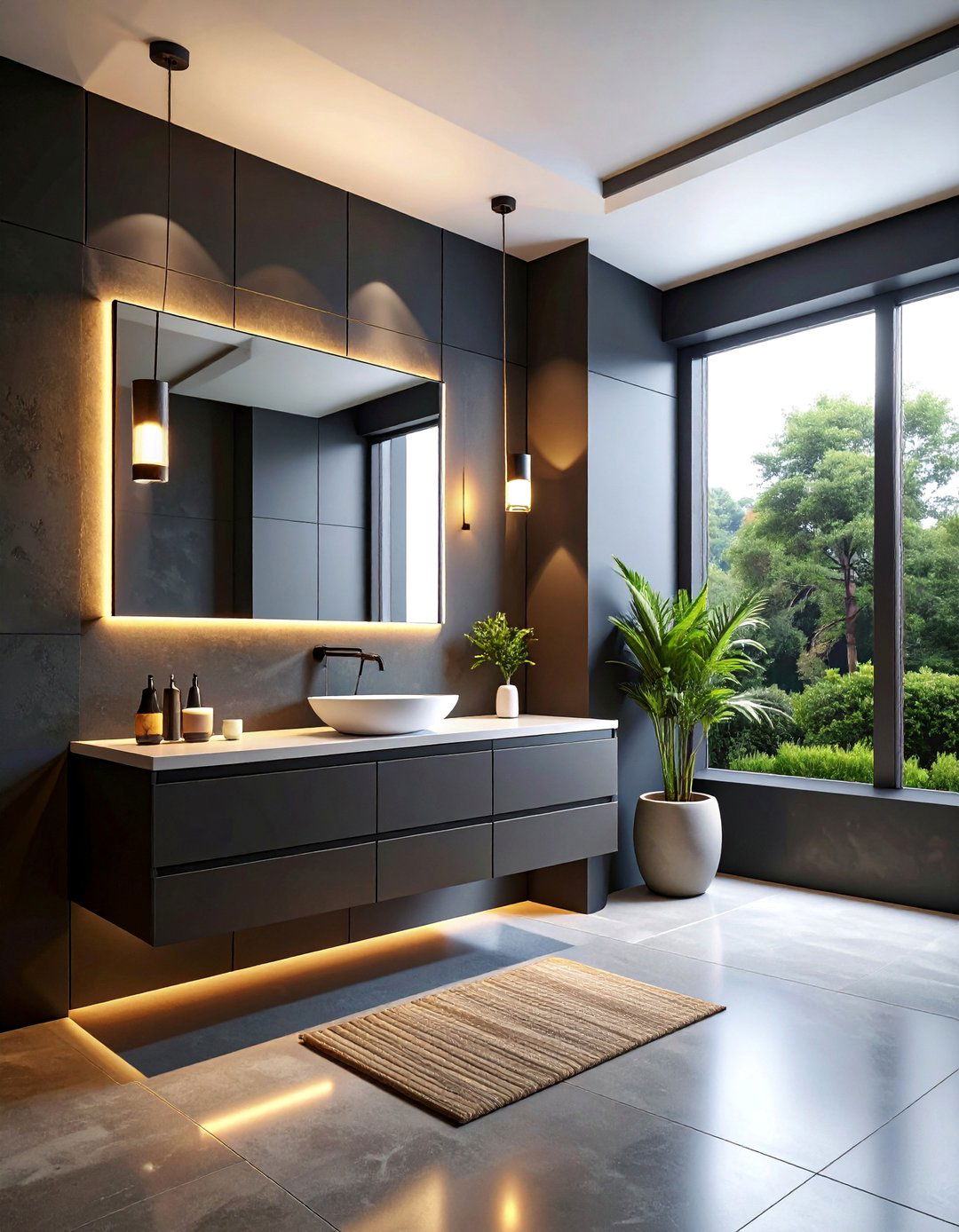
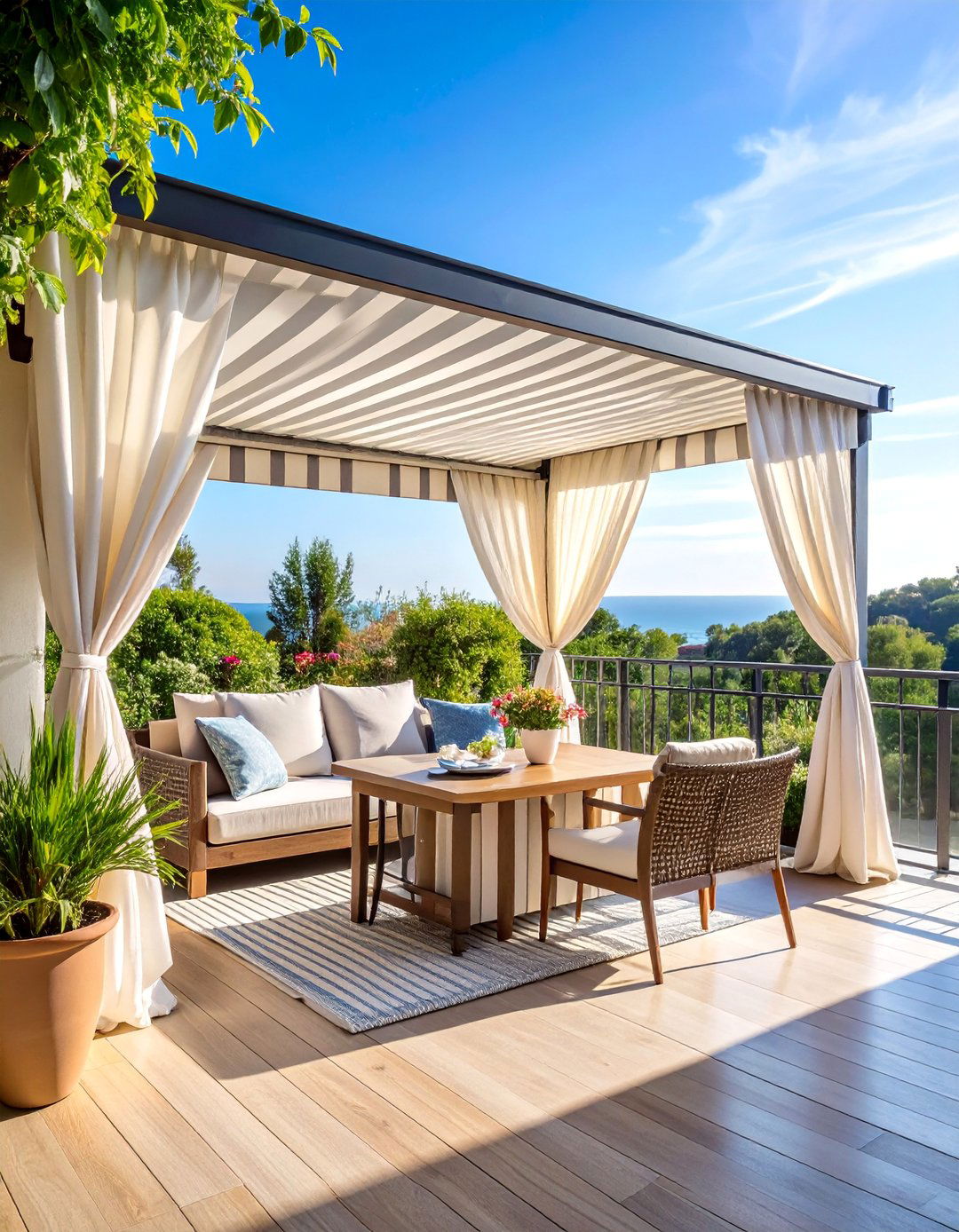
Leave a Reply